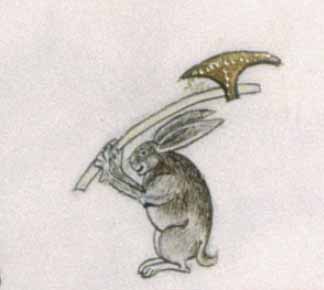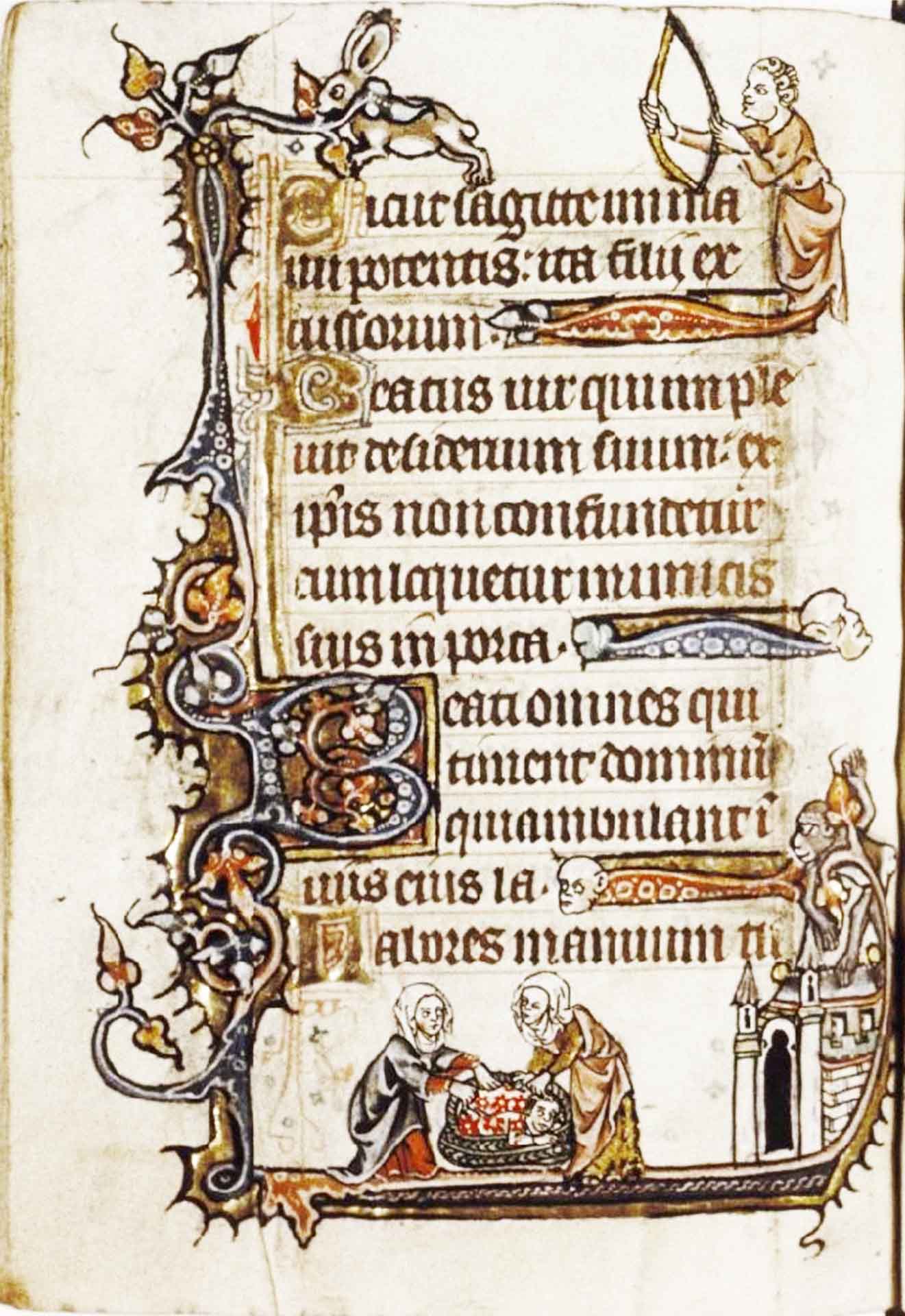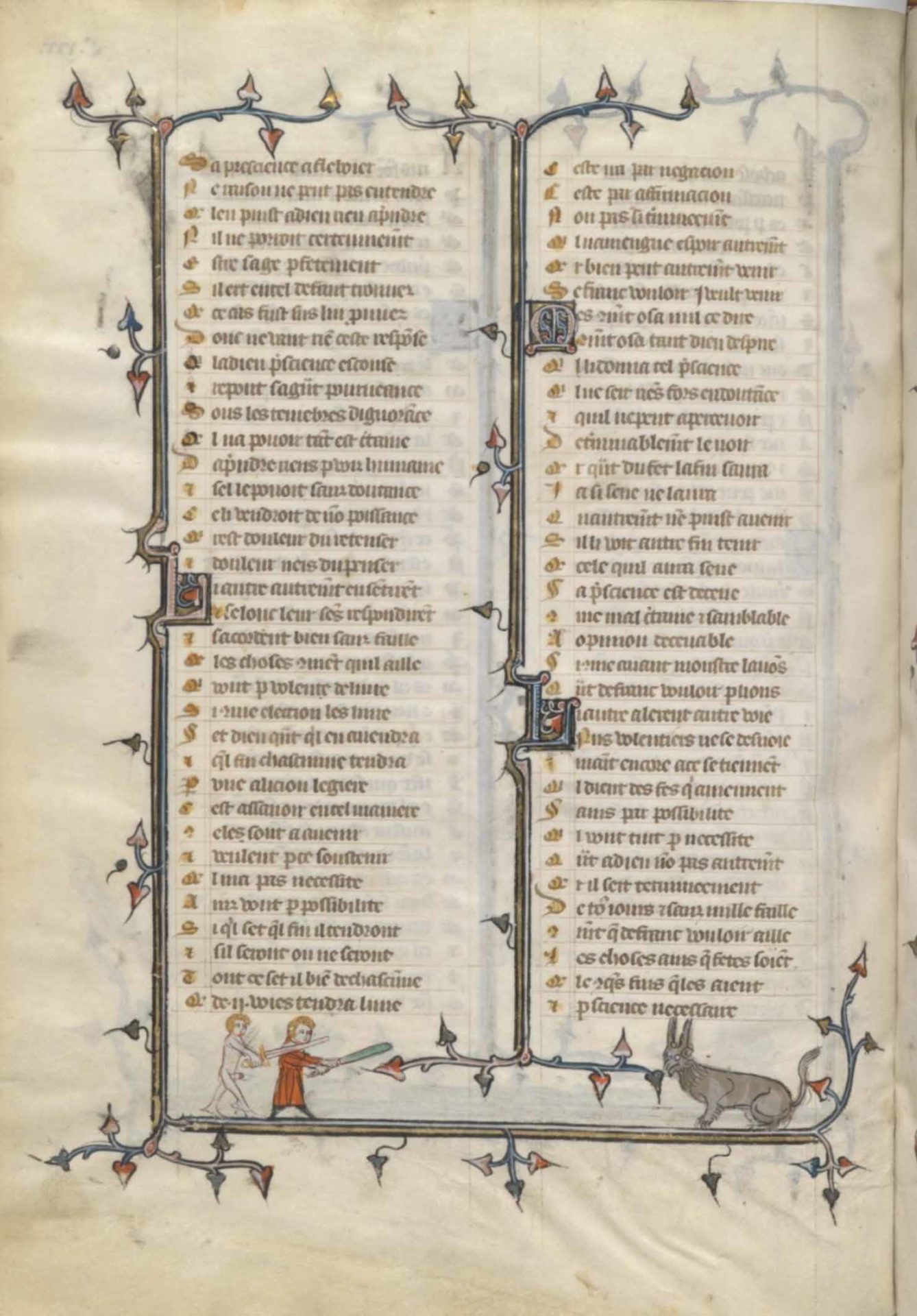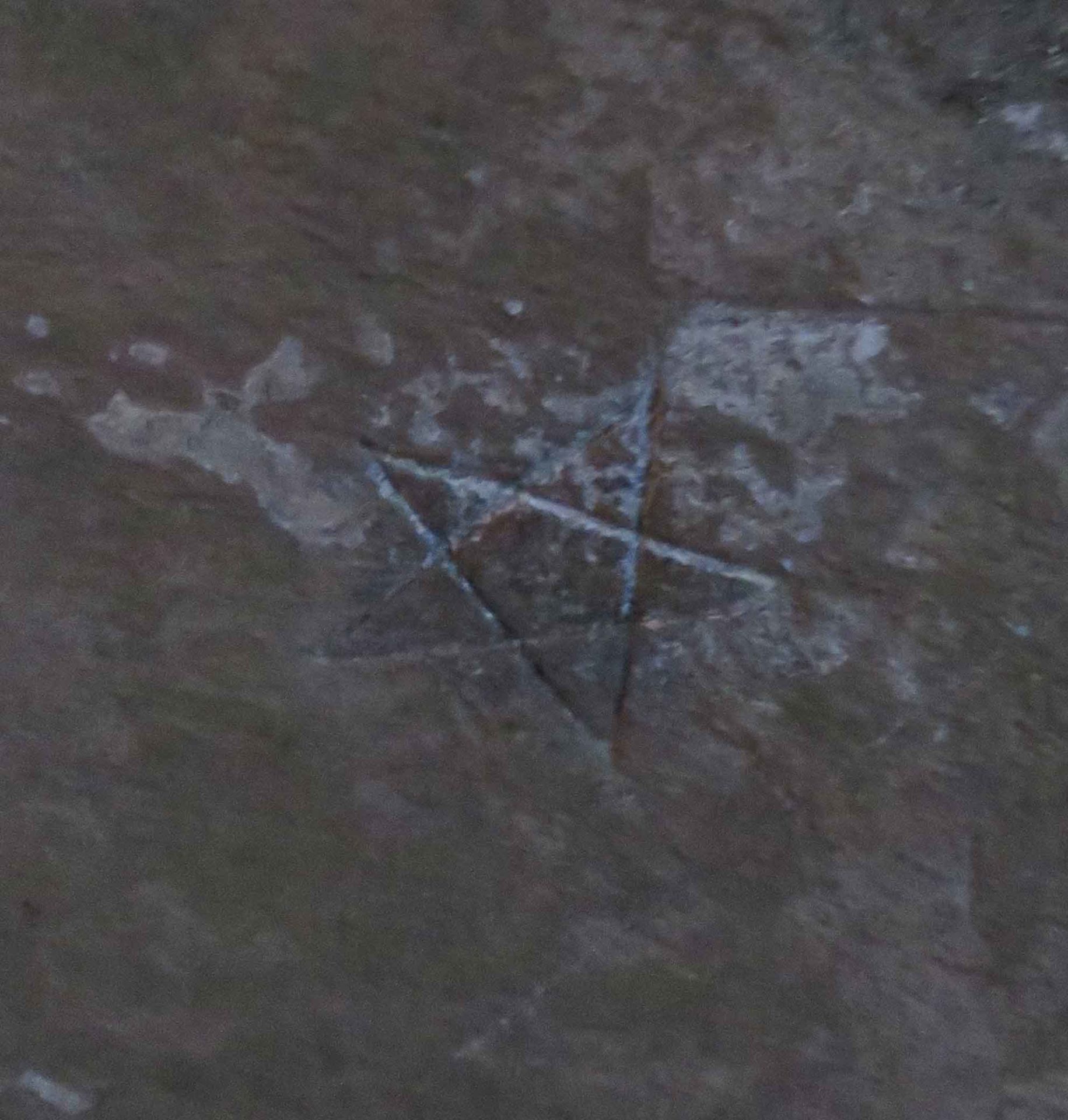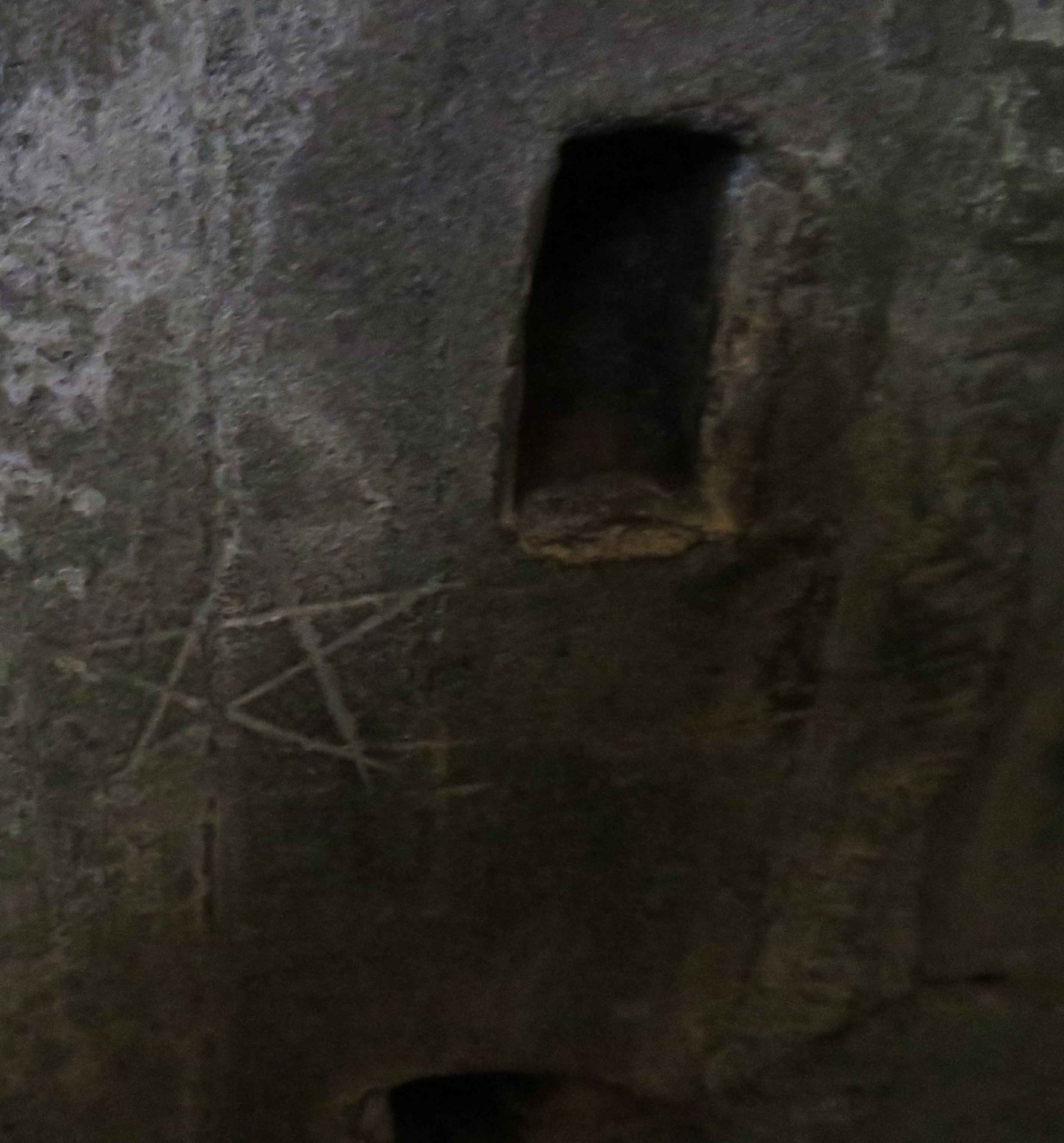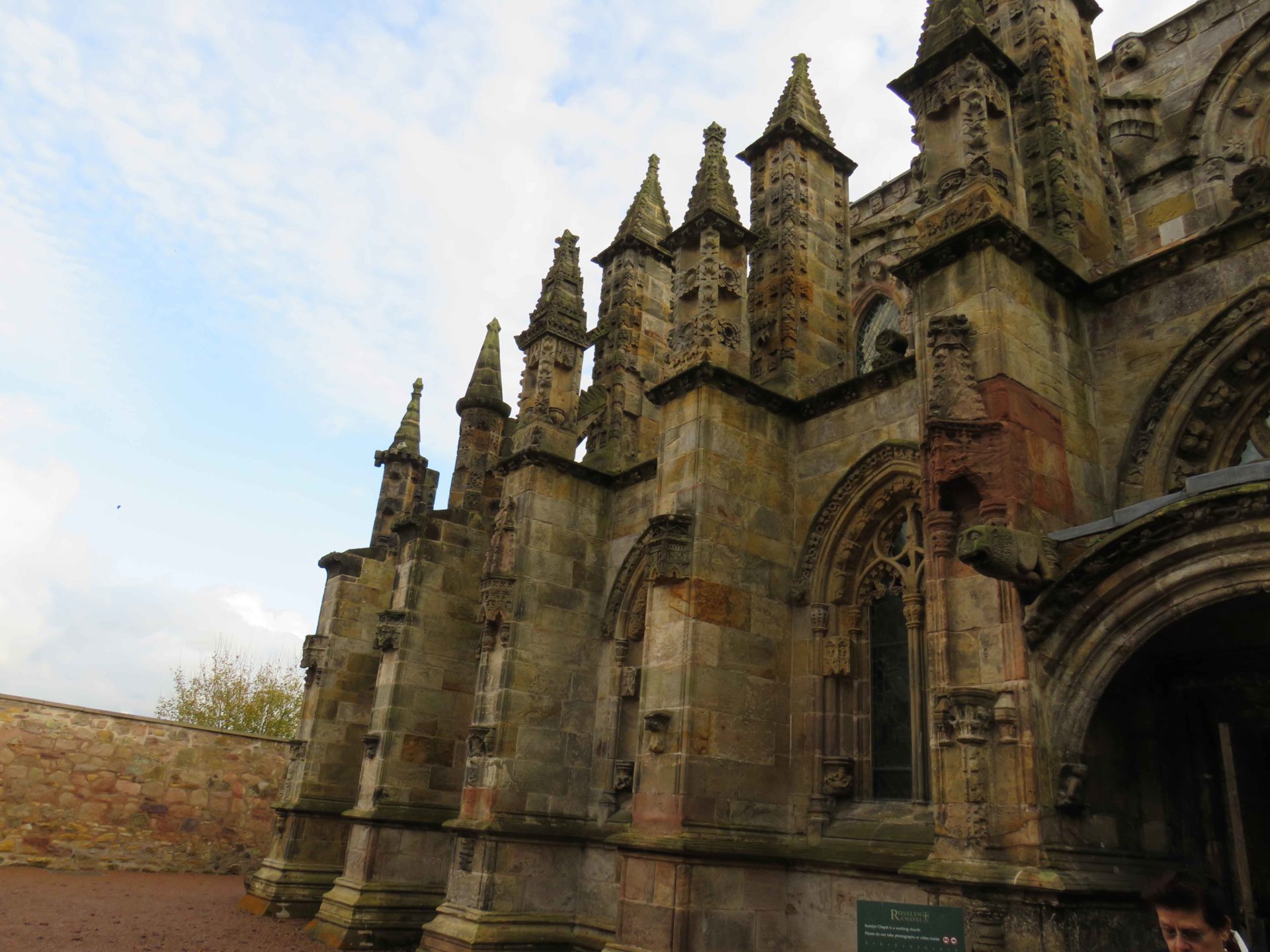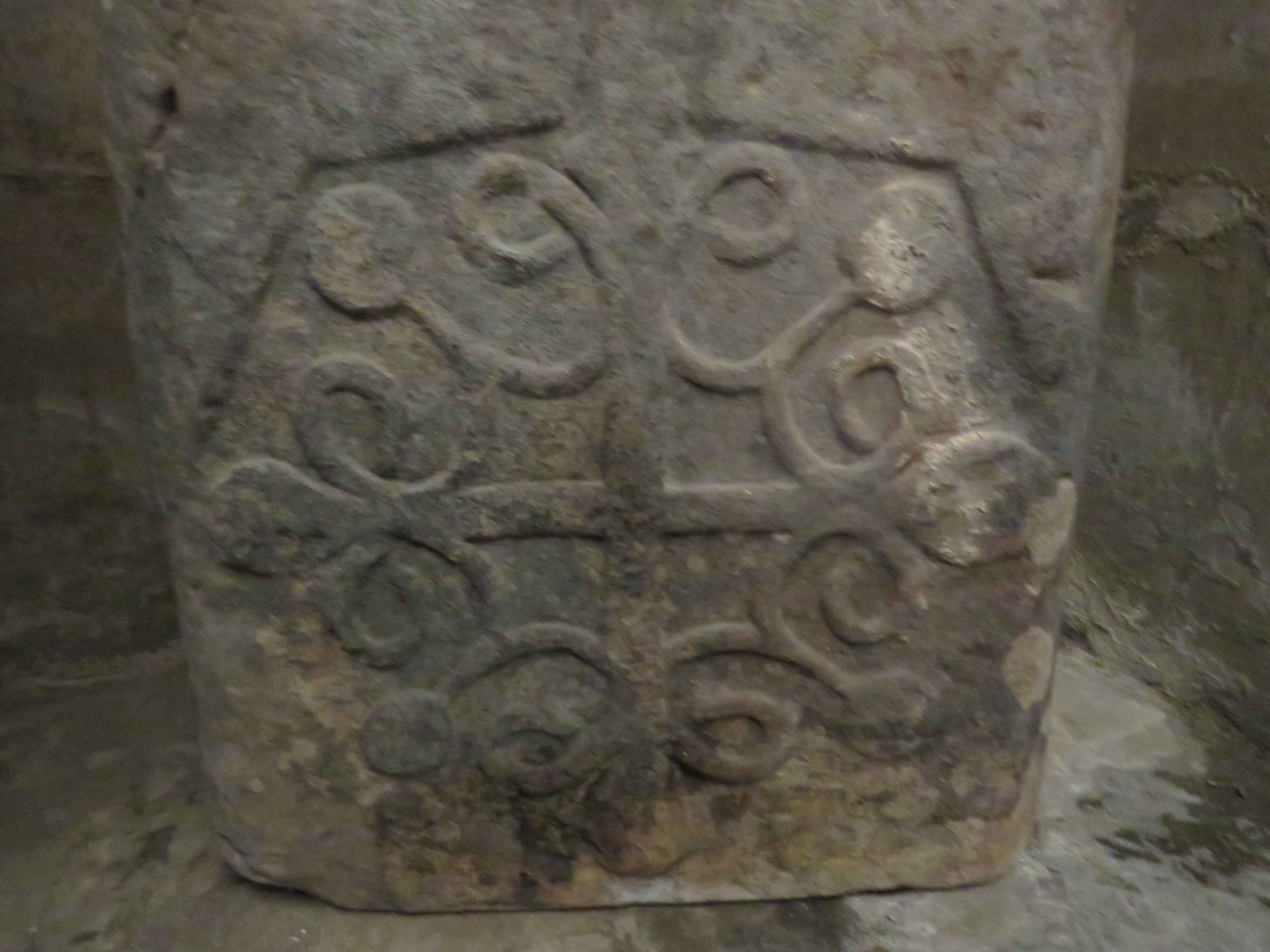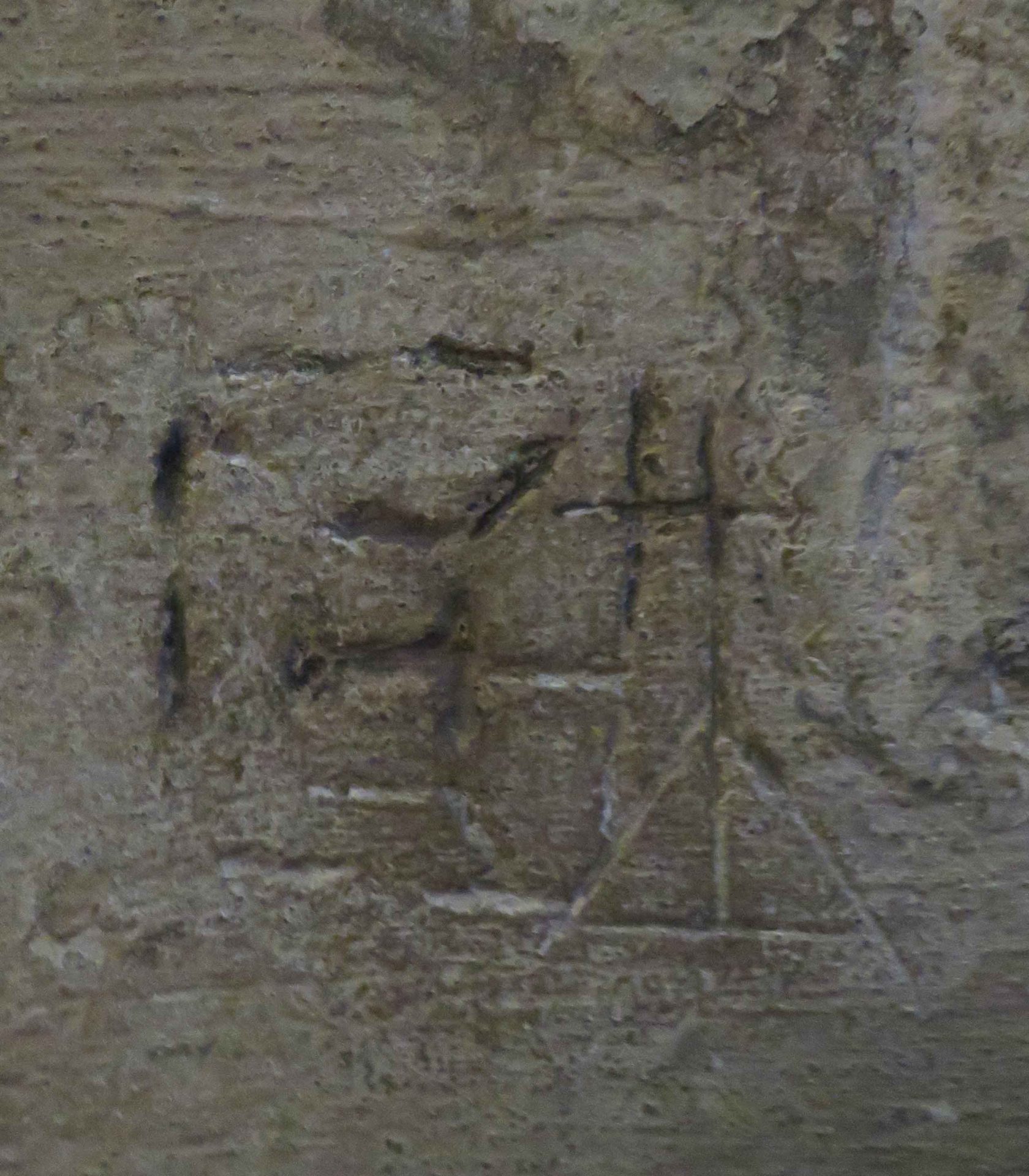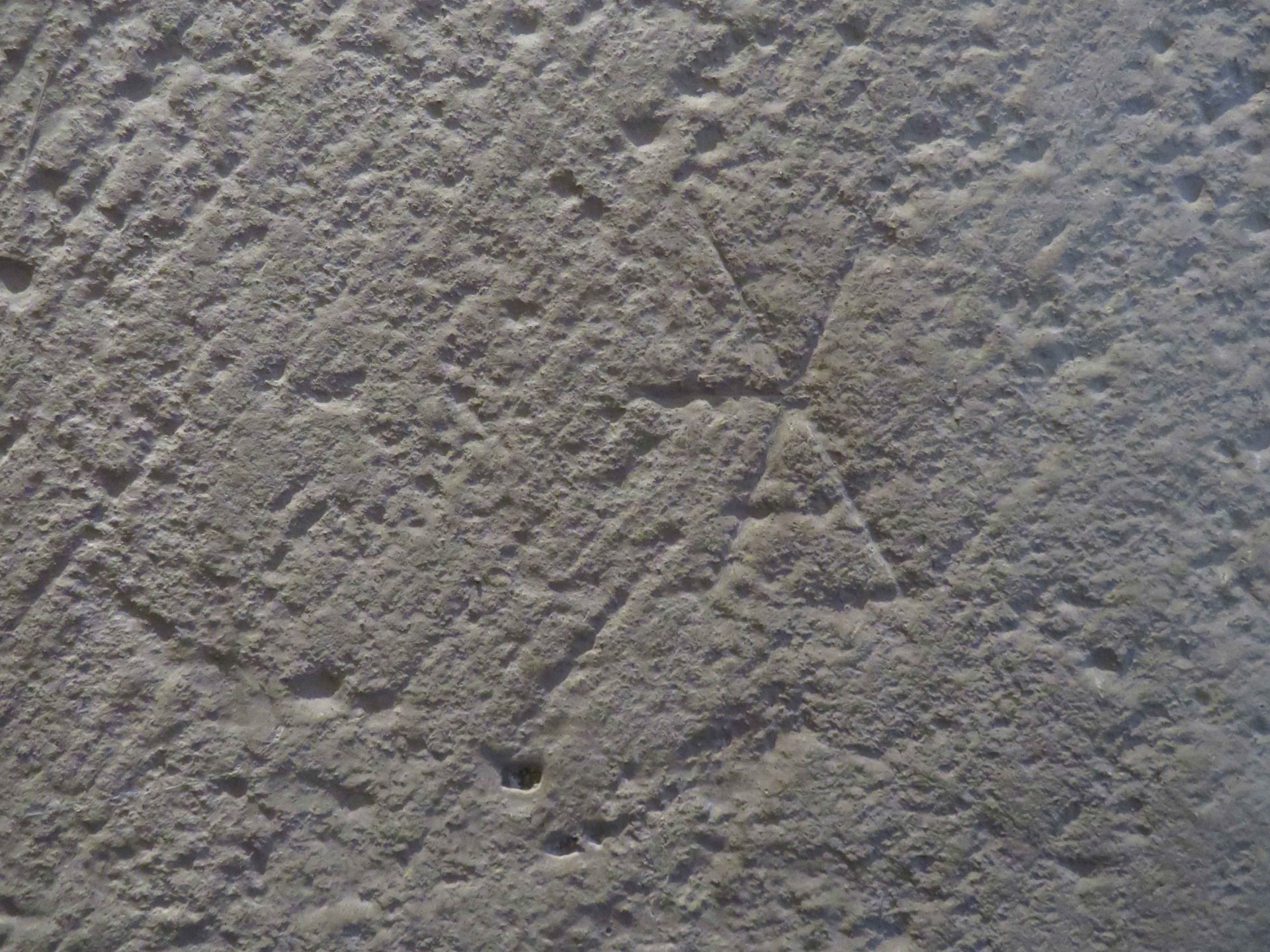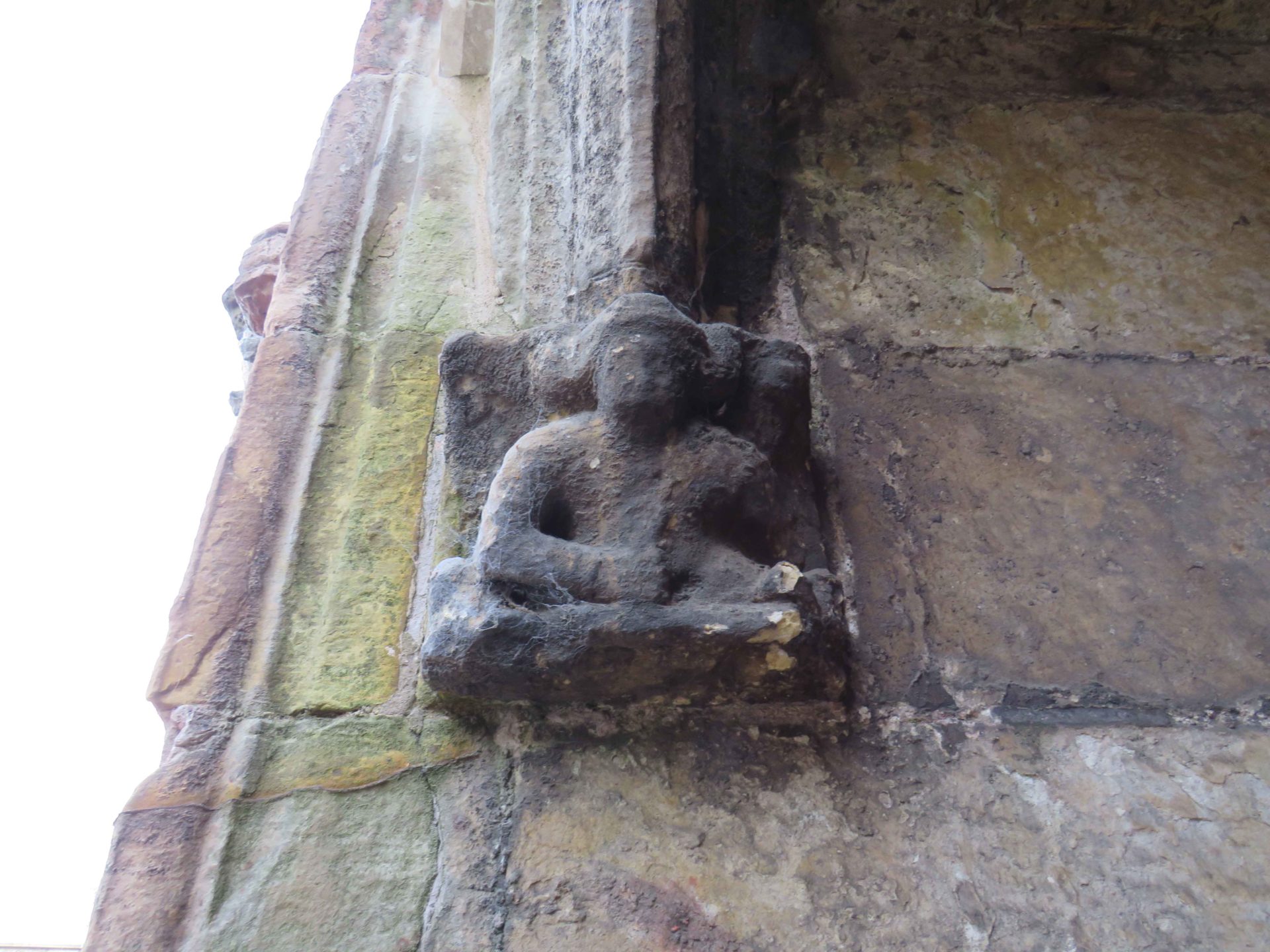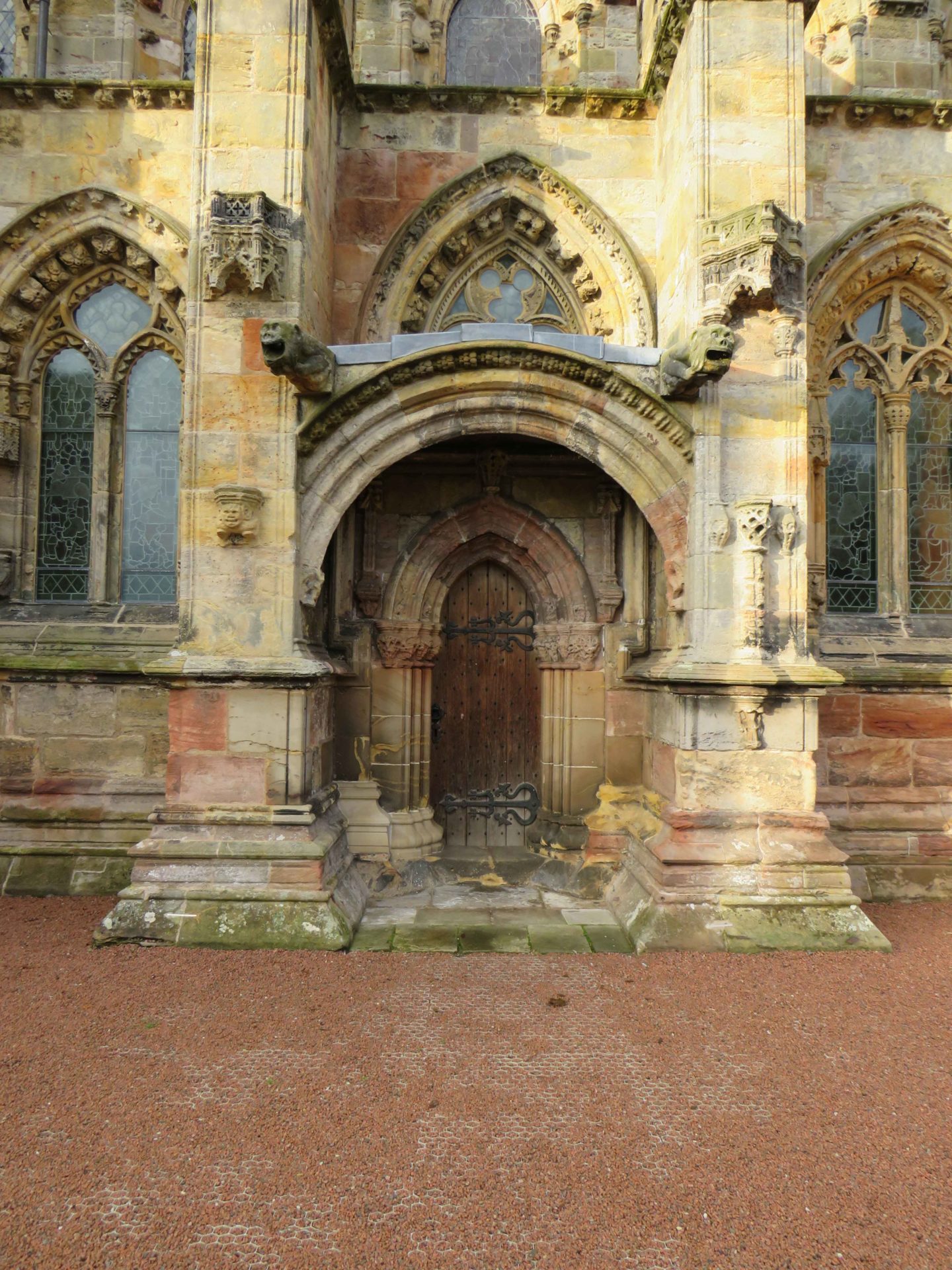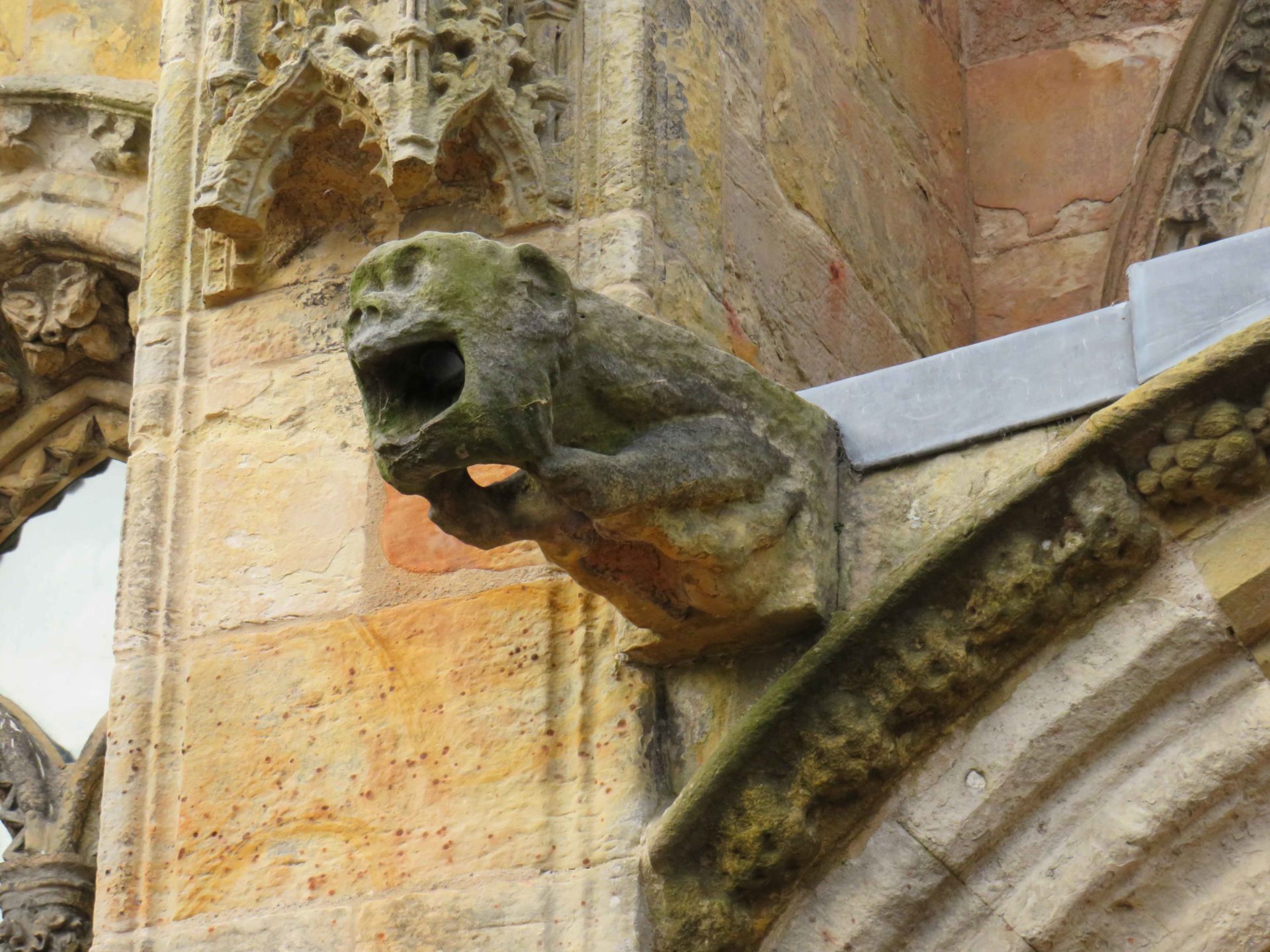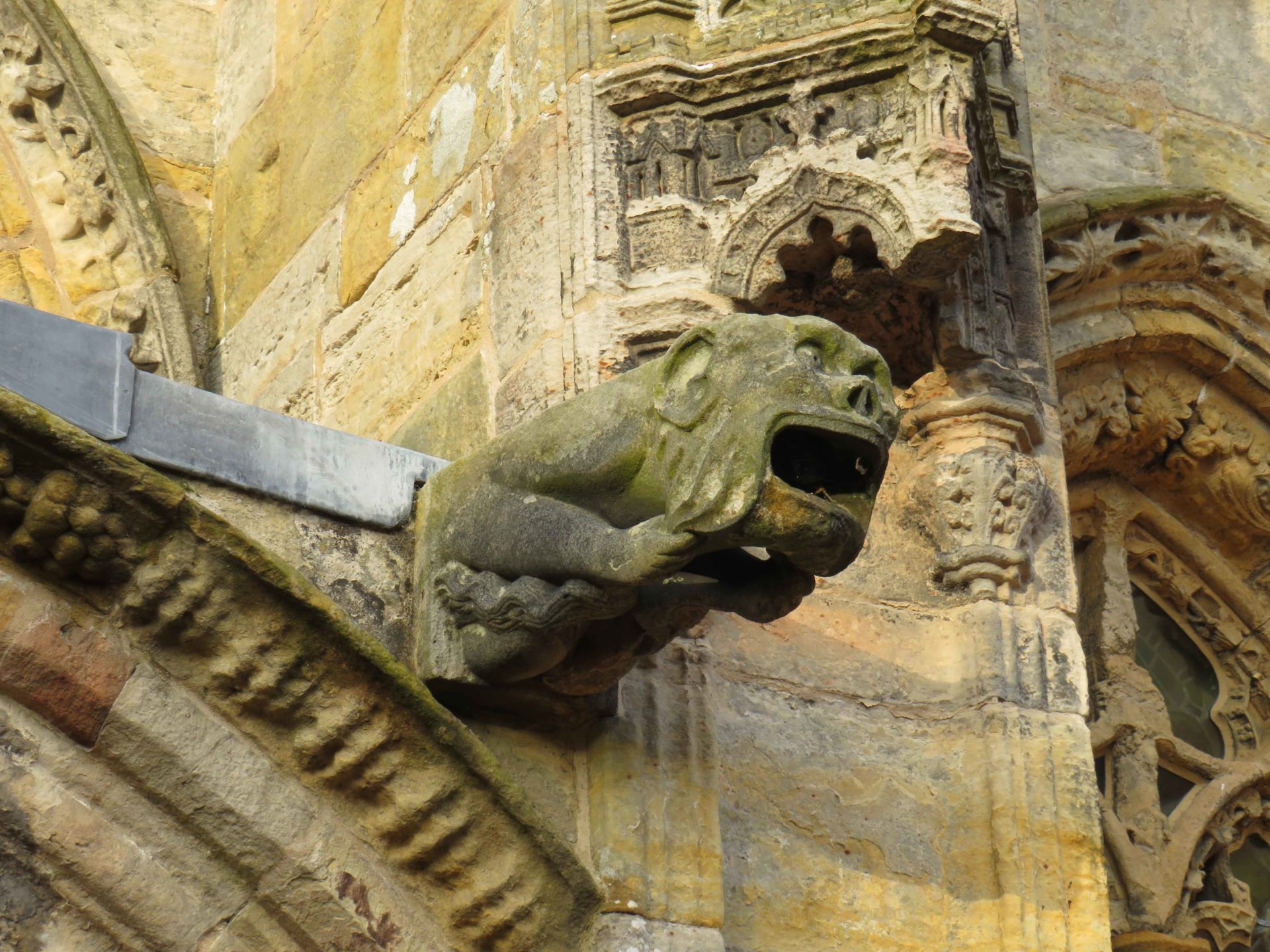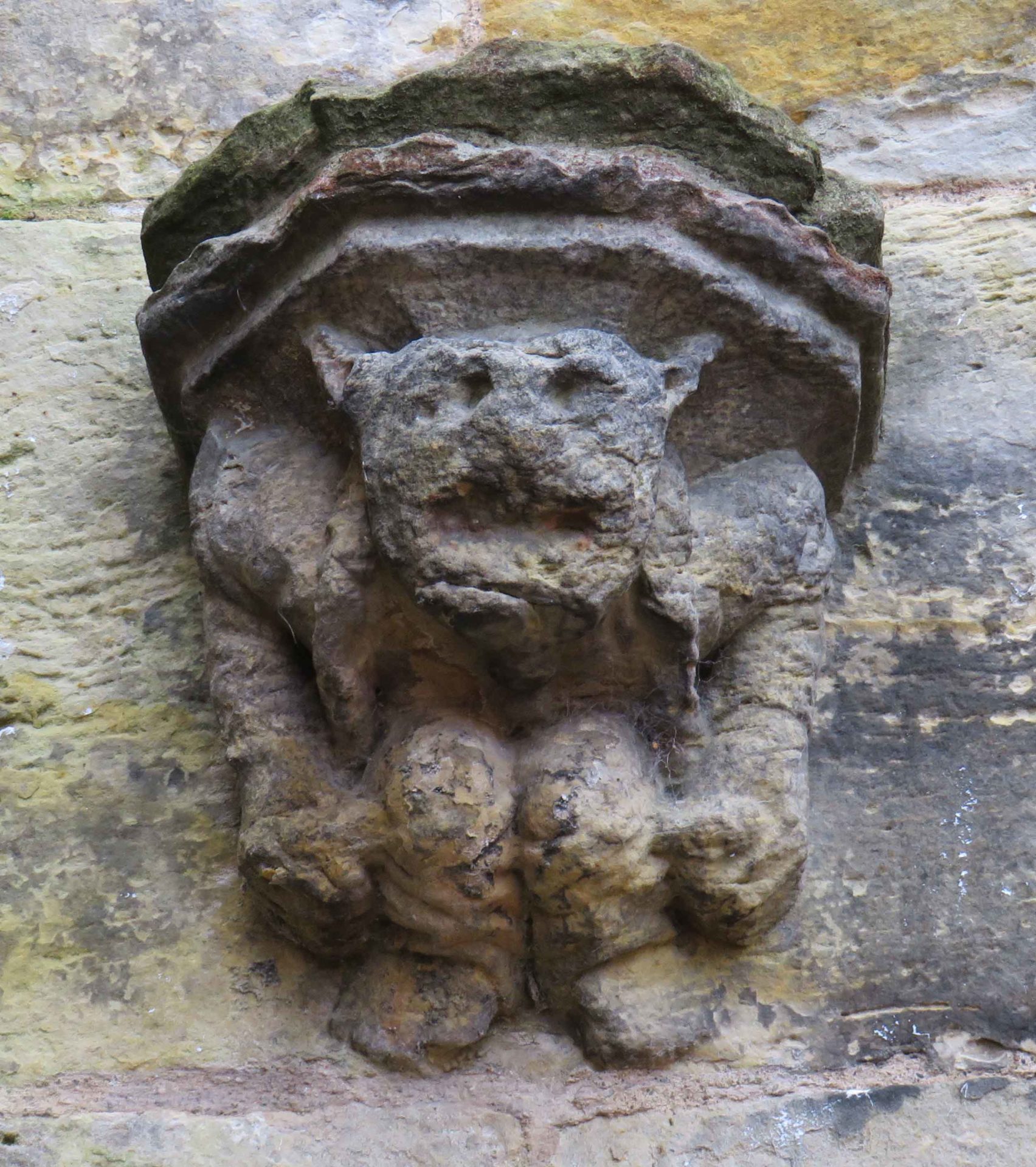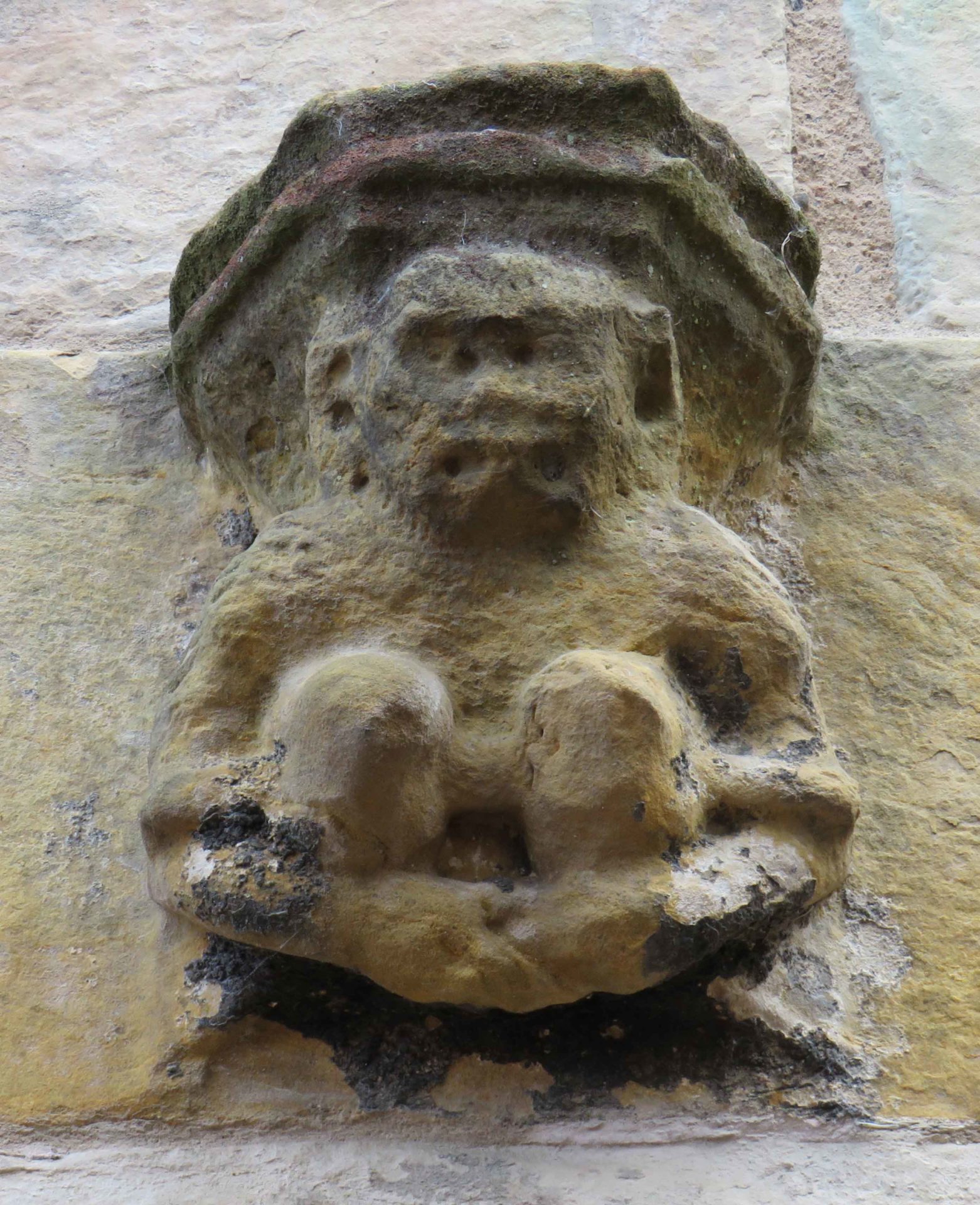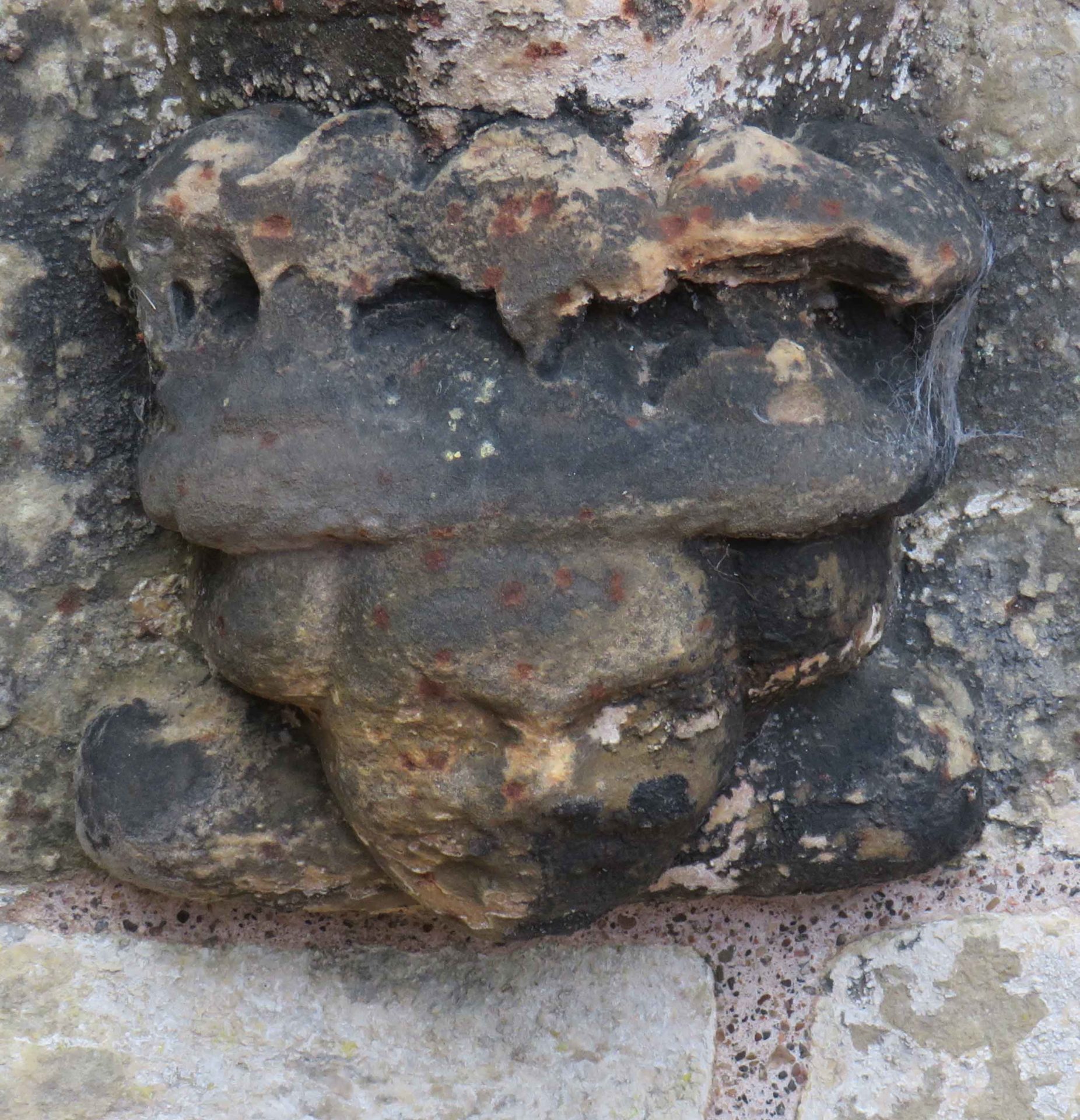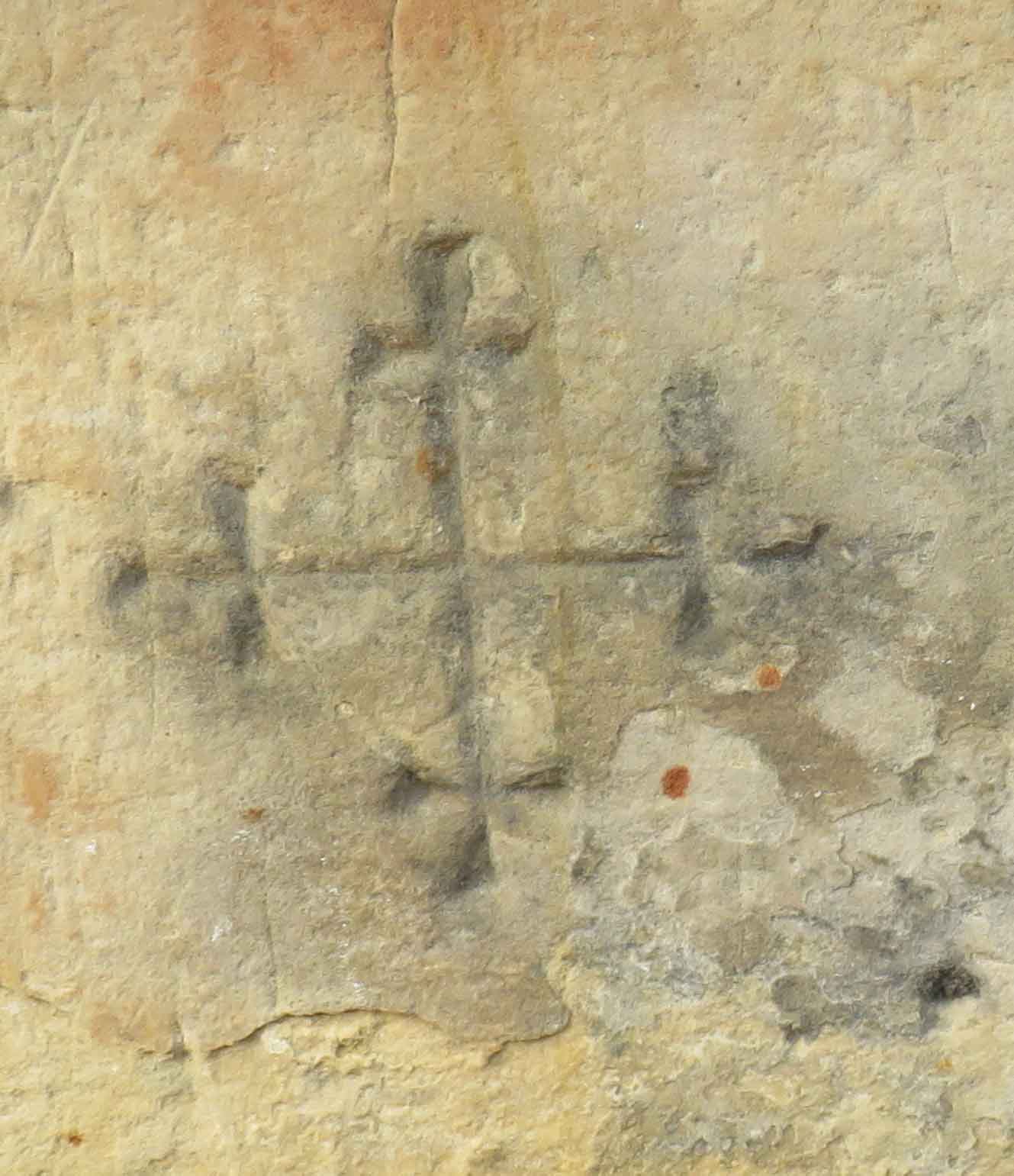Medieval Musings
Witch's Marks & Gargoyles
Rabbits! Not just any rabbits - KILLER RABBITS! - are in the margins of many medieval texts. Monty Python certainly noticed them! The star mark on the medieval page is a six pointed star while the witch's marks stars at Rosslyn Chapel appear to be five pointed.Is this significant? Symbolism and superstition are rife permeating contemporary thought and lives still.
It's highly unlikely that the marginalia in these manuscripts is merely 'doodling'. Ink and parchment were extremely costly. The marginalia is detailed and was time consuming to produce. Books were rare and expensive for as yet there was no mass printing process available.
The Gutenberg press of 1439 was the first to use moveable type, and was the forerunner of mass produced documents and books.
https://en.wikipedia.org/wiki/Johannes_Gutenberg
Scholars have shown, including Australia's own Lynne Kelly, that medieval memory techniques could be the reason for the bizarre and vivid images in the margins of medieval manuscripts.
Read more about these in my new book (forthcoming) Shame & Sexuality on the Goldfields where I discuss the constructs of shame and sexuality: where they originated, how they related to the goldfields, and how they have changed over time.
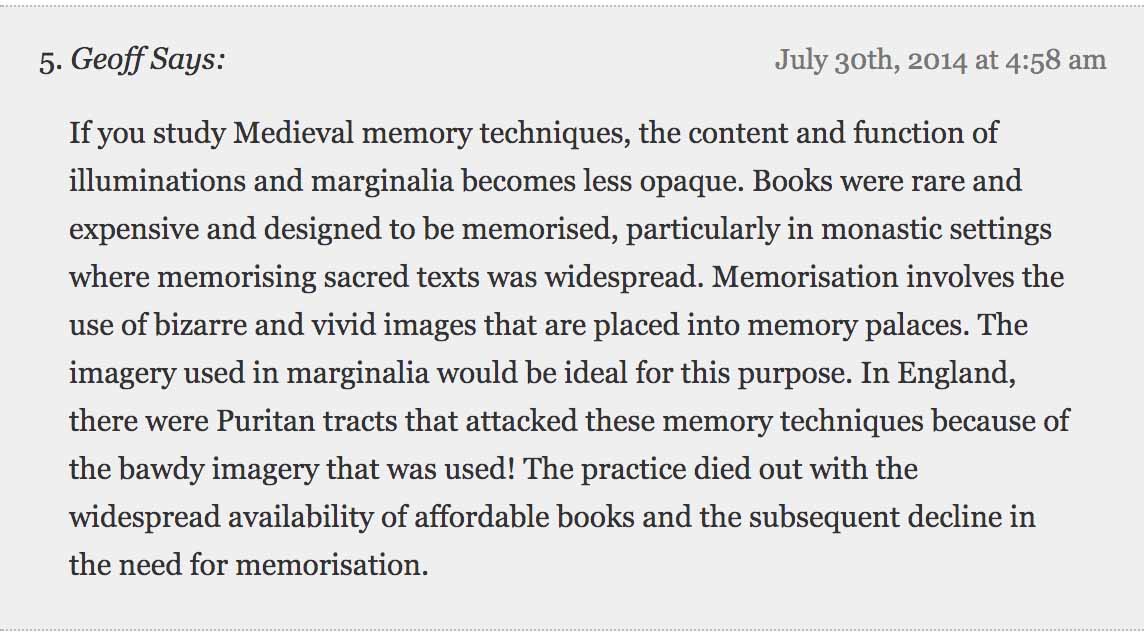
Apopotraic (evil averting) marks, sometimes known as witches marks are evident in churches, chapels, houses and some of the most unusual places! Not only are they on medieval churches in England and Europe but they are in Australia too.
Above are some examples of gargoyles and marks at Rosslyn Chapel, Scotland. Gargoyles in many grotesque forms were meant to protect the boundaries of buildings from malevolent other worldly beings or supernatural dangers. There is a belief that gargoyles were put on the outside of churches to scare away the Devil. However, does this theory hold up when we find examples of these frightening beasts inside holy places or chapels?
Folklore dictates that they were used to ward off evil beings and the supernatural. Old shoes, horseshoes, dead cats and other paraphenalia can be found in houses in Victoria.
In Ballarat, a water channel contains over 60 different masons' marks carved into the hard bluestone that lines kilometres of its walls.
See Mystery, Marks and Masons.
Mystery, Marks & Masons
Excerpt: Chapter 18
Sixty different masons’ marks are carved into the hard bluestones that line the south
wall of the Yarrowee channel that runs through Ballarat in the central goldfields
region of Victoria, Australia. The channel winds its way through the city before it
reaches the Leigh catchment area, the Barwon River and then to the sea near the
port city of Geelong. There are no visible marks on the stones that are used to pave
the channel floor, or on the stones at the top of the walls. The marks appear to be
randomly placed, facing either up or down, and even sideways. These marks are a
rare example in Australian architecture and colonial industrial heritage. They are
significant for their quantity quality, diversity and the era in which they were built.
This chapter explores the comparison between the 60 different masons’ marks
on the Yarrowee channel with masons’ marks on stones in the United Kingdom. It
excites the senses for the scope for further studies based on more extensive research
and methods. A new study for investigation in Australia, stonemason’s marks,
inscriptions, the placement of stones and other items often relate to previously hidden
information about the culture and life of the people who instigated them, and can be
a rich source for historians.
The Yarrowee channel, part of a storm water system that runs through
Ballarat, Victoria Australia was transformed by the two municipalities of Ballarat
East and West into the present waterway, part of a network of channels and associated
structures. The bluestone lining the south wall of the channel was installed around
the 1890s. The storm water channelling system was a direct result of gold mining
activities that formed the basis for the establishment and development of Ballarat
from the early 1850s.
In Australia the study of such masons’ marks is an emerging field of academic
historical research that potentially offers new information in the general area of
colonial history including, but not limited to, the transmission of construction
techniques, folklore, and the early origins of the masonic movement in Victoria.
Dorothy Wickham & David Waldron, Pay Dirt: Ballarat & Other Gold Towns, Chapter 18, BHS Publishing, 2019. https://ballaratheritage.com.au/bookshop/pay-dirt-ballarat-gold-victoria-eureka/
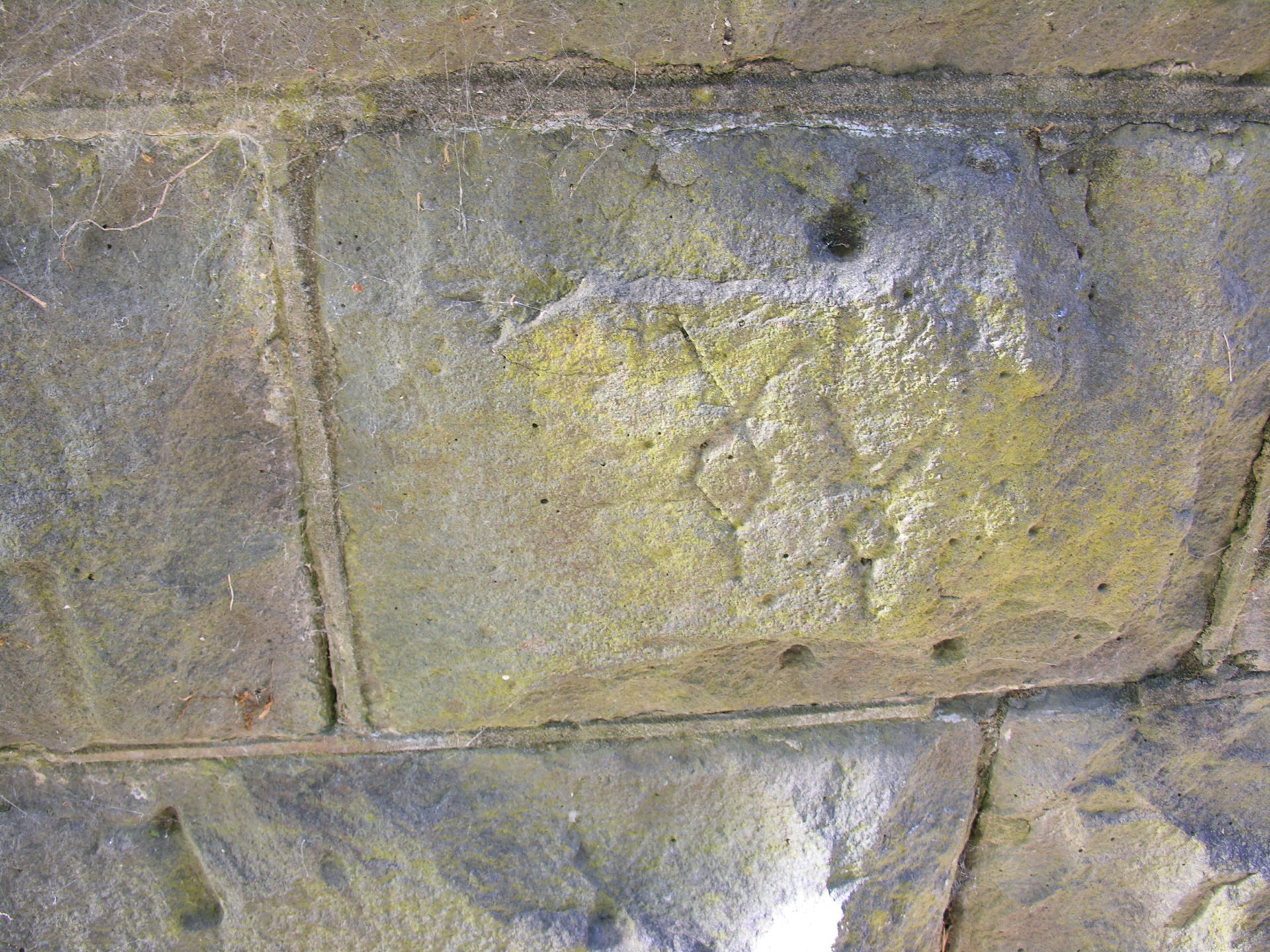
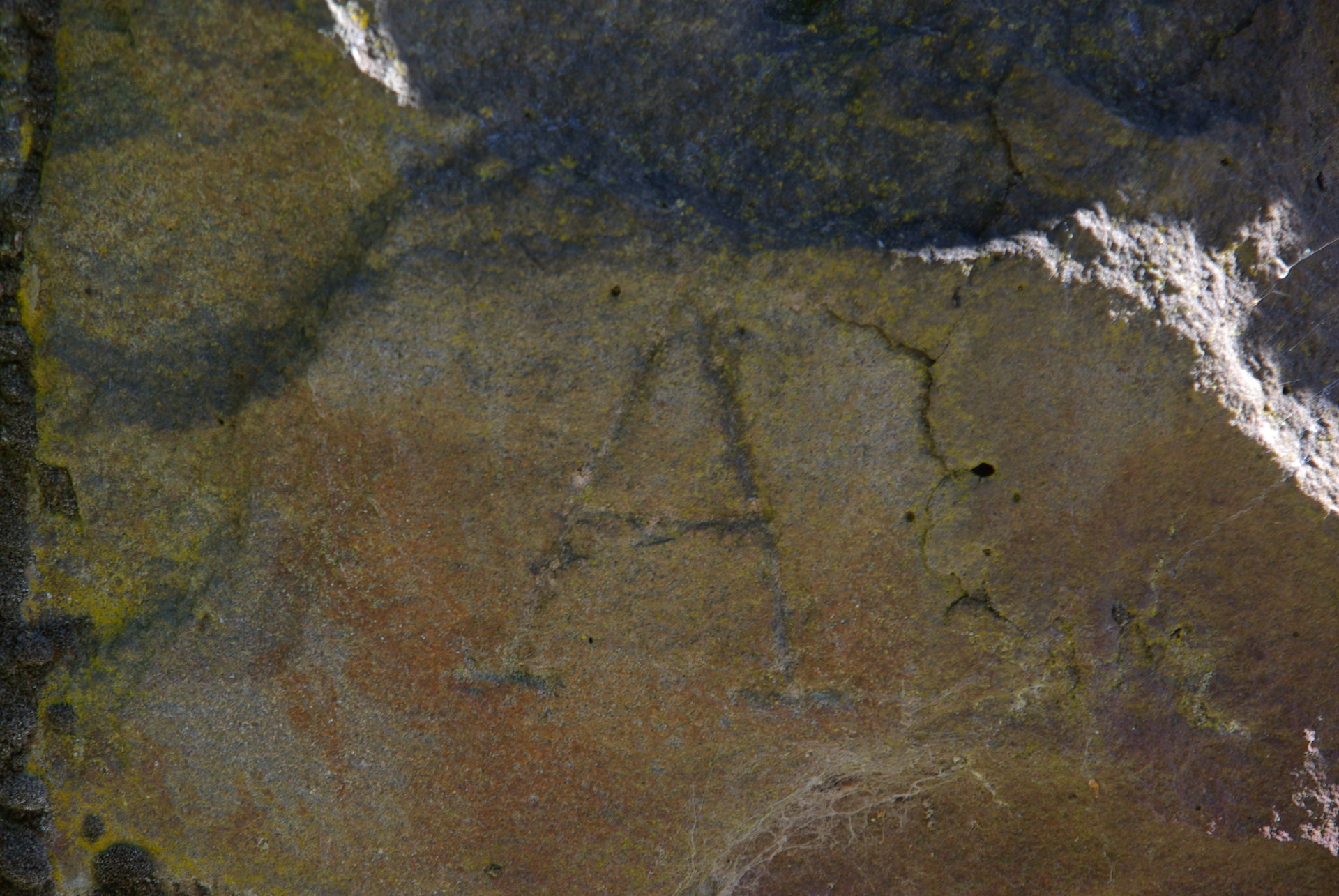
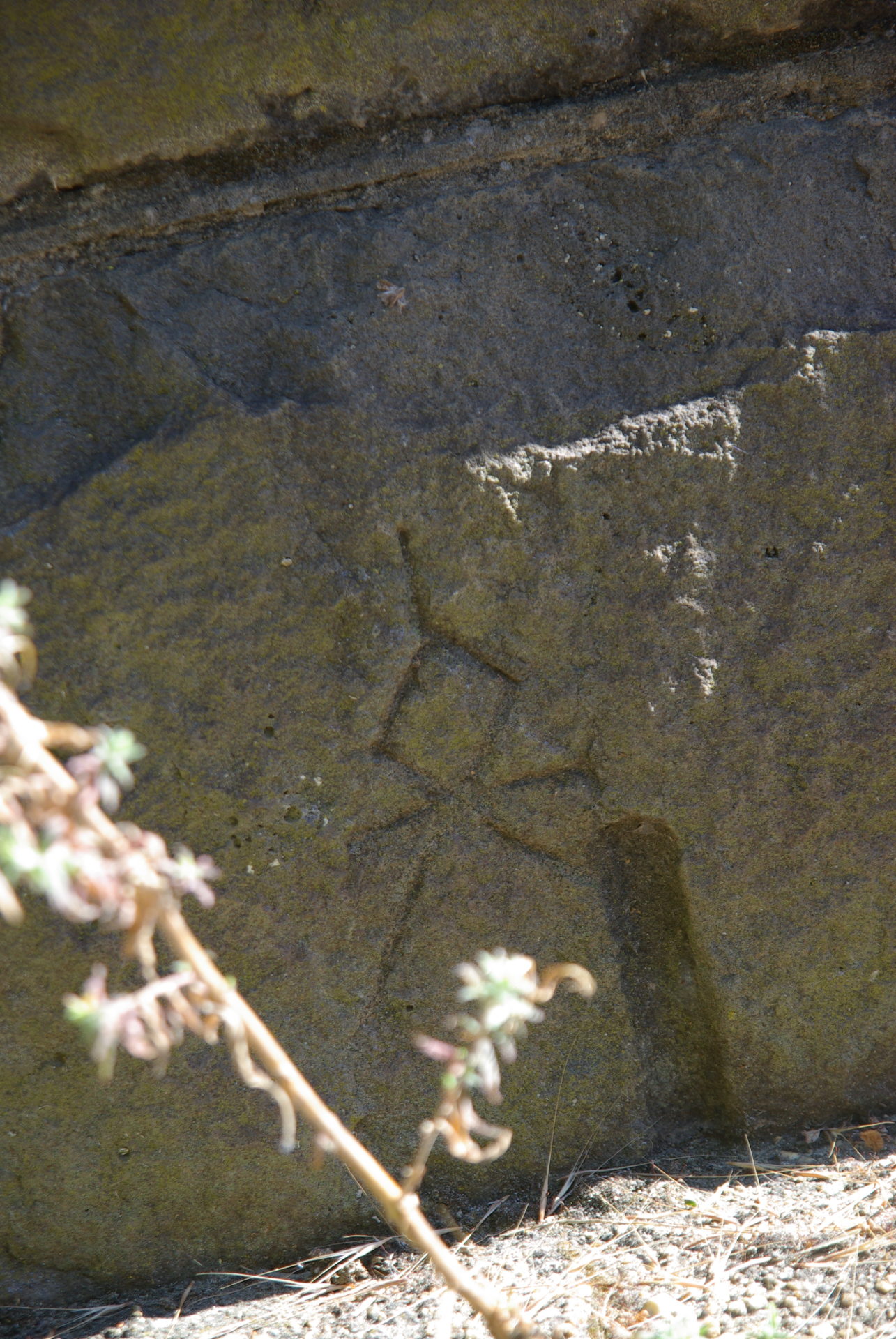
SNIPPET'S FROM THE NEWS
Dot's Drunkards and other Doings.
At Ballarat on 8 Feb 1855 death from intemperance.
Witness Isaac Strong of Ballarat – Superintendent of police.
On Friday evening last deceased was wandering around the camp in a state of drunkenness he had been warned off previously. I took him in custody and put him in the lockup, he appeared to be quite out of his mind, he gave his name, but I got no other information …
Witness – William Ross of Ballarat
I am a prisoner [drink]
Witness
William Quigley of Ballarat
Assistant lock up keeper …
VPRS 24 / Box 24, Unit 16
David Wilkenson
Committed self destruction while intoxicated.
Inquest 2 Feb 1855 Ballarat
Witness – George Cambridge
I am a miner at Ballarat – yesterday at 3 I was working just outside the tent with the deceased occupied he came out and ….. suffering from the horror of drink ...
VPRS 24 / Box 24, Item 70
At Eureka in on 13 Jan 1855 Death by natural causes
Witness – Robert Carr of Eureka
I was called into the deceased but he was dead before I arrived …
Witness George Cummins of Eureka
I am the proprietor of a refreshment tent, and have known the deceased about 18 months. The deceased came to my tent abut 1 o’c on the 11th inst, he appeared to me to be in bad health, I gave him about ½ a glass of wine as he appeared exhausted, he then asked to be allowed to lay down, he fell asleep, and snored heavily, I got up to him about midnight I asked him if he were unwell, he answered yes. Mrs Cummins bathed his head, and gave him a Seidlitz powder, he appeared something better the next morning, but still seemed oppressed with sleep and disinclined to speak, I did not send for a medical man as I did not think that he was very ill, but about past 2 he appeared to get worse, and I fetched a medical man, but deceased died before he arrived.
I was not aware until after his death that he had been previously in bad health. He appeared to be sober when he came into my tent but had the appearance of having come from a debauch. He only took half a glass of sherry whilst in my tent.
The deceased was a digger, his pockets were searched before witnesses and contained ₤5 17 shilling and ninepence, and about ½ an ounce of gold dust (produced)
George Cumming.
Witness – Charlotte McKay of Eureka
I have known the deceased about a year and a ½ he has been a mate of my husband for about 12 months, he is of temperate habits, but occasionally has been the worse for drink, His health for the last 4 months has been very bad, he suffered from dysentery, which reduced him greatly. I have been nursing him during that time. He has been to work scarcely a fortnight, I saw him last Thursday at his own tent about 2 o’clock; he appeared to be quite well and sober I did not see him afterwards. He has never been nervous from drinking. The day after Christmas was the last time I saw him worse for drink.
VPRS 24 / Box 24, Item 27
Bitterly was a trooper who was found drunk on patrol on 22 October 1854. He was sentenced to 3 months imprisonment with Hard Labour. [Ref: ERD]
BIRTH: 1830 at London
MARRIAGE:
IMMIGRATION: Arrived Melbourne 1853
DEATH:
YEARS KNOWN IN BALLARAT DISTRICT:
RESEARCHER:
Nicholls was editor of the Diggers' Advocate newspaper with George Black, an ardent Chartist. Nicholls entered the Eureka Stockade on Friday 1 December 1854. In his written account he states that on Saturday night many stockaders were drunk. Nicholls became a member of the Local Court at Ballarat to which he was elected on 14 July 1855. [Ref: EUR; ES]
REMINISCENCES OF THE EUREEKA STOCKADE BY H.R. NICHOLLS
As night drew on there was a steady falling off in the numbers. One after another went away to get a clean shirt or to prepare in some way for Sunday, although there were rumours which grew more frequent as the night wore on, that an attack was to be made on the stockade. At night these rumours seem to have caused increased caution, for pickets were posed far out towards the camp, so that any advance of the troopers and the soldiers might be made known and be prepared for. By ten o’clock in the morning I should say that there were hardly more than a hundred in the Stockade. Many of these were Irish and, indeed, the movement at that time seemed to have become almost an Irish one. At this time egress from the enclosure was stopped without a password, but why I never was able to learn. I, with others, about ten o’clock went out – I do not remember that we were sent – to see if the pickets were on duty. We were, in fact, a sort of ground round. After a time we found the pickets in a groghut playing cribbage, and drinking, and, apparently, in the best of humours with themselves and conversed with a young lady, decidedly good looking, who presided over the grog. By this time it must have been drawing on for midnight, and we returned to the Stockade where there were again rumours of an attack, but how originated no one could tell. By this time I began carefully to consider, taking an accurate survey of the whole encampment, and I came to the conclusion that, at that time, at all events, there were not the means of a successful fires, except two big Irishmen with gigantic pikes, who appeared to derive great pleasure from guarding the place of exit. I told my brother that it was but wisdom to go and see what the next day would bring forth, to which he demurred at first, but finally saw the prudence at first, but finally saw the prudence of the opinion I had formed. So we essayed to leave, but the pikemen would not let us. They enforced their orders with quite an air of vigilant duty, saying that we must get the password from him, which I found to my amazement was “Vinegar Hill”. This satisfied me at once, and I decide to go him. We gave the word, the pikes were lowered, and forth we went to make out way to the Red Hill, where, on the main road, our ten was pitched.
At this stage, once more, I found the value of that bump of caution which I am said to possess. The time was about two o’clock on the fatal Sunday morning, December the 3rd, 1854. It was a true Australian night, not a breath of wind stirred the leaves of the stringy-bark trees, which then grew thickly on the ranges, or of the gums whose white stems gleamed ghostly on the flats as we passed” The moon shines bright on such a night as this”, we might well have sighed our souls to some fair dweller in a tent, after the fashion of Troilus, albeit the tents enclosed stalwart males mostly, sleeping after a hard day’s work in search for fold, or, possibly, in marching and counter marching. The whole air was full of that fine haze which is seen on such nights once or twice a year, a haze which slightly veils but does not conceal, lending a ghostly, yet be beautiful appearance all around. Our road lay properly in the direction which might have brought us into collision with any outlaying parties from the abode of the authorities. Bearing in mind the rumours of an attack I decided to make a long detour, so shifting off to the left we wound our way through the trees and the holes till we reached the main road to Geelong. It was lucky that we did so, for, as I afterwards learned, at that very time the troopers, who were very furious and reckless, were issuing from the Camp, and if they had seen us with our guns upon our shoulders we should have had, I fancy, small mercy on that day and at that hour. As it was we met with no one. The most profound silence prevailed; no lights were to be seen; the whole visible would was at rest. As Wordsworth says about the houses, the very tents seemed to be be asleep, and yet at that very time was being prepared the attack which was to cause the loss of thirty or forty olives, and change, let us happily remember, the Government of Victorian goldfields. For ourselves, we reached our tent where some of our mates lay fast asleep; all except the sailor, Bill, who had elected to remain in the Stockade. Wearied out we lay down and knew no more till about five o’clock in the morning when Bill rushed in, declaring it was all over, that he had barely escaped, and seizing his clothes he vanished never to be seen by me again.
A few things remain to be told. The next day all was silence. Troops and sailors arrived from Melbourne under the command of Sir Robert Nickle, martial law was proclaimed, and there was a demand fro special constables. One man only was sworn in, for all were with the rebels, so-called, although many thought that there was no necessity for, nothing but folly indeed in, an appeal to arms. On the second day, however, in spite of the martial law, it was decided to hold a public meeting, which was held, as the authorities wisely saw that they had to deal with loyal yet injured people. Resolutions were passed in favour of amnesty and I and my brother, sitting on the top of the Black Hill, drew up the petition which was subsequently presented, and was successful.
A few nights afterwards I visited the grog-tent out of which we had turned the defaulting pickets, where there were was a young and pretty girl, who attracted much attention in those days. This tent was but a short distance from the Stockade, but was not burned down as so many were. The girl told me that on the morning of the attack, when the Stockade had been rushed, the tent was full of fugitives – some lying on the ground, some under the tables, and all afraid that they would be discovered. Se stood outside , and when some troopers came up shoe told them that she was alone, and hoped that they would not hurt her. One excited soldier, she said, ran his bayonet through her dress, but the others called him away, and the tent was not entered. So the fugitives escaped, and were thankful therefore. This is what I know about the Eureka Stockade.
Centennial Magazine May 1890
Reportedly Perrin was a drunk and no hoper. Perrin started a butcher shop in Bungaree. Eliza Perrin kept a refreshment house at Ballarat. She was born in 1829 and died in 1869.
Eliza Perrin, disclosed in letters to a cousin in England that she had run a business, bought a house, and accumulated money in the bank, ... Perrin was independent in nature writing to her cousin ‘it is entirely for yourself to choose whether you shall settle in England or come out here … I am sure you would like far better either to join me or have a place of your own like mine than to be confined to the stitching business’.
Perrin had decided to emigrate in 1853 to join her husband John on the Diggings, but on reaching Ballarat found that he was a drunken jealous man. She wrote ‘I was keeping a Refreshment House but he drank and destroyed all that I had’. Perrin devised with her ‘own endeavours’ to run a business to support herself and her three children while her husband was gold digging ‘up the country’ with his brothers. She ‘saved a little money’ and then ‘built a new house’ which cost her between ₤60 and ₤70. She wrote that this was ‘on the main Melbourne and Ballarrat [sic] road 10 miles from Ballarrat [sic] and I will take care that he never destroys this. He does not know that the house belongs to me or anything in it’.
The letters of January 1859 also revealed that Perrin was contemplating buying ‘2 or 3 acres of ground at the back’ of her Refreshment House and Store, rearing poultry, and fencing a garden. She commented that she could ‘hire a man for 15 shillings per week’ and he would pay her ‘better than a miserable husband’.
Dorothy Wickham, Women of the Diggings: Ballarat 1854, BHS Publishing, 2009; Dorothy Wickham, Silent Screams: The Hidden Agenda: Women in the Margins on the Goldfields, Published in Deeper Leads: New Approaches in Victorian Goldfields History, pp. 85-111, Keir Reeves & David Nichols (eds), 2007. (peer reviewed)
https://ballaratheritage.com.au/bookshop/women-of-the-diggings-1854/
How 60-year-old Janet Geddes came to be a resident of the Refuge is largely unexplained. However a clue can be found in the correspondence records. Geddes had had a long association with the Refuge, having been employed at Grant Street as a servant in 1874. A previous pregnancy had seen her an inmate of Ballarat Hospital in 1862. In 1887 the Inspector of Charities queried Geddes’ eligibility to still be counted amongst the inmates. The Refuge Secretary, Edith Glenn, acknowledged his criticism and noted that in future Geddes would be counted as staff. Given the importance of the laundry to the financial stability of such institutions it was not uncommon for a small number of older women to be retained because they were reliable workers and it would seem from this response, and the fact that she was described as a ‘laundress’ in 1889, that Janet fell into this category. However, if this was the case, her period of sanctuary was short-lived. The doctor treated her for neuralgia, flatulent colic, and dyspepsia on many occasions from 1888 until 1890. When, suffering from bronchitis, she was hospitalised in 1890, it appears her usefulness in the laundry had expired. On her discharge from hospital Geddes lived independently but far from successfully in the community. On 23 July 1890 Geddes was charged with being drunk and disorderly and described in the court as an habitual drunkard. In May 1891 she was back before the Ballarat East Court of Petty Sessions charged with thieving two fowls to the value of 3/-, the property of Too Chee, and sentenced for one month’s imprisonment. In September 1891 Geddes pleaded guilty to a charge of being drunk and disorderly in Bridge Street, and was fined 5/-. She was in Collingwood in 1896 getting assistance for a short time from the Melbourne Ladies Benevolent Society and died eight years later, at the age of 71, having been a resident of the Ballarat Benevolent Asylum. Geddes was buried in an unmarked grave at the Ballaarat Old Cemetery on 25 February 1902.
Along with Mary Ann POTTER committed for trial for robbing John FINNING, employed on the ‘Sacramento’ hulk. 24 October 1853
Sentenced along with Elizabeth McCOY and John THOMPSON, the owners and occupiers of a house of ill-fame in a lane off Corio Street. The conduct of the females was anything but respectable being accustomed to harbouring within their domicile, miners and prostitutes of every grade in town.
Banks elicited the sympathy of the magistrate on behalf of her young children, who already deprived of their father, having been convicted and set to the roads for 10 years, was discharged and recommended to make herself scarce in Geelong and retake some more respectable calling.
McCOY an old offender and well-known to the police was given 6 months imprisonment.
THOMPSON, who had only arrived in this part of the colony the day before, convinced the bench that his visit to the house was more accidental than premeditated and was given three days in gaol as a warning. 1 March 1855
Reference: Pam Jennings - transcribed from Geelong Advertiser Police Reports
|
Drunk |
Discharged |
22.7.1856 |
|
Drunk |
48 hrs imprisonment |
23.7.1856 |
|
Lunacy |
Found rambling in the neighbourhood of the wharves at an early hour on Sunday morning |
29.7.1856 |
|
Drunk |
3 days imprisonment |
27.11.1856 |
|
Drunk & Vagrant |
No visible means of support – 3 mons imprisonment |
5.12.1856 |
|
Lunacy |
From her demeanour in court she was not in her right mind. Held over for medical. To be kept under restraint at the Sth Geelong Gaol until further orders |
16.6.1857 24.6.1857 |
Reference: Pam Jennings - transcribed from Geelong Advertiser Police Reports
|
BRILLANT, Sarah |
||
|
Vagrancy |
Had only been out of gaol 4 months when charged with no visible means of support. She said she was kept by a man named Thomas PRICE, the owner of a house occupied by prostitutes. Sarah was advised to adopt some other means of a living. Sentenced to 1 month’s imprisonment while Price was reminded of a 12 months sentence if charged again. |
11.3.1858 |
Reference: Pam Jennings - transcribed from Geelong Advertiser Police Reports
|
CAMERON, Mary |
||
|
Drunk |
11.1.1856 |
|
|
Drunk |
7 days imprisonment |
3.5.1856 |
|
Drunk |
3rd offence; 14 day imprisonment |
14.5.1856 |
|
Stealing |
4 panes of glass belonging to Mr SNIP, Lt Ryrie St; no appearance by prosecutor so dismissed |
18.7.1856 |
|
Drunk |
One of the most incorrigible drunks in the town; 14 days imprisonment |
18.7.1857 |
|
Drunk |
Habitual drunkard; 3 months |
4.8.1857 |
|
Vagrancy |
Sentenced to 3 months |
23.7.1858 |
Reference: Pam Jennings - transcribed from Geelong Advertiser Police Reports
|
Vagrancy |
Continued to be the company of bad characters of both sexes. Frequented the neighbourhood of Kildare. Sentenced to 12 months to reflect on her present career. |
13.4.1855 |
|
Reference: Pam Jennings - transcribed from Geelong Advertiser Police Reports
|
COOPER, Susan |
||
|
Obscene language |
An unfortunate female who although young has been following a course of profligacy in Geelong for more than 4 years past. Efforts were made by the Rev TUCKFIELD to save the girl from misery and ruin and he took her under his roof in the capacity of a servant, but the girl left his family and returned to her abandoned courses. To show how little punishment is the infliction of a pecuniary fine on these women, it is only necessary to state that the girl’s fine was paid immediately yesterday by one of her paramours, which has been done in the case of every other prostitute in every instance of the kind, within our knowledge. |
24.8.1850 |
|
Robbery |
Accused of having robbed Mr G SCOTT, publican but the money had apparently been given to her for a passage to Melbourne after being told to leave town. |
25.10.1850 |
|
Stealing |
Under the age of 20, charged with stealing money from Caroline BARNWELL. According to Barnwell, Cooper had broken windows at her house near the Scottish Chiefs hotel and then taken money from a table near the window. John DAVIS, the barman, had witnessed the event but had not seen any money taken. |
31.7.1852 |
|
Assault |
Charged by Caroline BARNWELL |
3.8.1852 |
|
Assault |
An elderly woman with babe in arms charged with stabbing her husband in the arm with a dinner knife. Her husband lives at Barwon Falls and he had aggrevated her to the height of her temper but she had no intent of inflicting bodily harm. She begged the court to overlook the affair this time. Discharged after both Susan and husband were admonished. |
12.4.1853 |
|
Obscene Language |
Described as a prostitute – 48 hrs for disgusting language |
2.7.1858 |
|
House of Ill-Repute |
Found in the house owned by Lewis ROLLAND, Corio St. along with Rose JACKSON and Polly FORD. Cooper a known prostitute but had never been in custody for any offence. Kept a brothel in Bellarine Street. |
4.9.1858 |
|
Stealing |
Charged by a Chinaman for stealing 1 pound 10/- from a purse. The man had invited to treat Susan, who was accompanied by other girls, and was inclined to go to her home with her behind the Theatre, when she grabbed the purse. Susan stated that the man had followed her and her friends. Discharged due to lack of evidence. |
12.10.1859 |
Reference: Pam Jennings - transcribed from Geelong Advertiser Police Reports
|
COSTELLO, Catherine |
(also known as Ann?) |
||
|
Vagrancy |
Had been before the courts here and in Melbourne before; one of the worst characters in town; arrested in February for pickpocketing; a common prostitute who associated with known thieves. Denied this summary of her life and said she lived under the protection of a hawker; sentenced to 3 mons |
20.5.1857 |
|
|
At Large |
Illegally at large having been transported from England to Van Diemans Land in 1852. Severe caution and discharged |
12.8.1857 14.8.1857 |
|
Reference: Pam Jennings - transcribed from Geelong Advertiser Police Reports
|
COY, Sarah Ann |
(alias BARKER) |
|
|
Lunacy |
Middle-aged; Had been known for 6 or 7 years as a confirmed lunatic. Unsafe to be at large Committed to Yarra Bend Lunatic Asylum |
3.12.1853 5.12.1853 |
|
Vagrancy |
Found in a hopeless condition. Sentenced to 12 months more to assist her than punish her. |
30.6.1855 |
|
Drunk |
11.1.1856 |
|
|
Lunacy |
Charged by the Water Police with constantly wandering about the wharves at night. Not in her right senses but at the same time she was quite harmless. Remanded for 1 week |
17.2.1857 |
|
Lunacy |
Vagrant wandering the town for the last 12 months without visible means of support. Seemed deranged and had been living most disorderly and drunken state; committed for 6 months |
3.7.1856 |
Reference: Pam Jennings - transcribed from Geelong Advertiser Police Reports
|
DIGNUM, Catherine |
|||
|
Vagrancy |
Charged with Jane MADDEN Most unenviable characters. Impossible for respectable people to live near them. Both sentenced to 3 mons. |
31.1.1857 |
|
|
Damage |
Charged with breaking a pane of glass belonging to Alexander McLEAN and with stealing 15 eggs, which she denied. She wished she had taken the eggs as she could have eaten them. Fined 5 pounds and to pay 2/6 for the glass. |
23.7.1858 |
|
Reference: Pam Jennings - transcribed from Geelong Advertiser Police Reports
|
DIGNUM, Catherine |
|||
|
Vagrancy |
Charged with Jane MADDEN Most unenviable characters. Impossible for respectable people to live near them. Both sentenced to 3 mons. |
31.1.1857 |
|
|
Damage |
Charged with breaking a pane of glass belonging to Alexander McLEAN and with stealing 15 eggs, which she denied. She wished she had taken the eggs as she could have eaten them. Fined 5 pounds and to pay 2/6 for the glass. |
23.7.1858 |
|
Reference: Pam Jennings - transcribed from Geelong Advertiser Police Reports
|
DOUGLASS, Caroline |
|||
|
Vagrancy |
18 years old; no visible means of support and constantly in the company of thieves and prostitutes. Mr Carman described her as one of the worst possible characters to be found in town. Sentenced to 12 months gaol |
18.1.1854 |
|
|
Stealing |
Caroline had been in the company of John HOWARD in a house kept by Sandy HALEY when she allegedly stole his coat and 30 ozs gold from a pocket. Found not guilty |
6.2.1854 |
|
Reference: Pam Jennings - transcribed from Geelong Advertiser Police Reports
|
DWYER, Julia |
||
|
Minor charge |
19.4.1848 |
|
|
Disreputable female |
23.6.1849 |
Reference: Pam Jennings - transcribed from Geelong Advertiser Police Reports
|
EDWARDS, Ann |
||
|
Vagrancy |
Appeared with infant in arms as a disreputable character and a companion of others of that description. Said that she obtained a living by manufacturing fishing nets used by the fisherman in the Bay. Police proved otherwise and sentenced to one month. |
20.10.1859 |
Reference: Pam Jennings - transcribed from Geelong Advertiser Police Reports
|
EGAN, Mary |
||
|
Shoplifting |
Charged with stealing 8 checked shirts from William Thomas MORRIS, draper. Only seven were recovered. Sentenced to 3 mons. The same day a James EGAN and John SMITH were charged with stealing cheeses from James BROWN, grocer. Egan was given 6 mons while Smith preferred to go to trial. |
7.6.1859 |
|
Vagrancy |
Appeared with 3 infant in arms with being idle and disorderly. Sentenced to one month |
20.10.1859 |
Reference: Pam Jennings - transcribed from Geelong Advertiser Police Reports
|
FERGUSON, Bridget |
|||
|
two children, one of whom is an infant. |
|||
|
vagrant |
Represented by the police as a woman of infamous character, and who had been before the bench on several charges of disorderly conduct. Sentenced to one months’ imprisonment under the vagrant act, with a caution that should she persist in the same course after her release, she would be sentenced to an additional three months imprisonment. |
7?.12.1846 |
|
Reference: Pam Jennings - transcribed from Geelong Advertiser Police Reports
|
FERGUSON, Mary Ann |
Alias MORSE; Alias NORA |
||
|
Stealing |
While on board the steamer Melbourne, Mary Ann had stolen wearing apparel belonging to Mrs Maria JONES. She was detained for examination of insanity of mind. Discharged |
11.5.1854 12.5.1854 |
|
|
Vagrancy |
Had been 2 or 3 times before the bench with no visible means of support. She had taken trips to Melbourne supposedly for the benefit of her health. The Magistrate suggested she take one more trip and before 11 o’clock that day!. Mary Ann curtsied and said she would comply then burst into a fit of laughter upon finding how very ready her plausibility was listened to! |
30.5.1854 |
|
Reference: Pam Jennings - transcribed from Geelong Advertiser Police Reports
|
FLYNN/ FINN, Ann |
||
|
Vagrancy |
Found sleeping in the doorways of churches and chapels; sentenced to one month |
8.12.1858 |
|
Vagrancy |
Infant in arms |
1.10.1859 |
|
Vagrancy |
Appeared before the Bench with an infant in arms, charged by the water police with being in a disgraceful state of intoxication. She was known as a bad character and reputed to be a disorderly person. Sentenced to 6 months as a vagrant. Dr CALLAN objected to the infant being sent to gaol but the Bench made no specific order on the matter. |
29.11.1859 |
Reference: Pam Jennings - transcribed from Geelong Advertiser Police Reports
|
FLYNN, Rachel |
||
|
Vagrant |
Idle and disorderly using bad language with no visible means of support. Quarrelling with another woman. A constant visitor at a common brothel in town. Fined 60/- |
27.10.1853 |
|
Vagrant |
Prostitute in James LOWE’s house; one month imprisonment |
12.11.1853 |
|
Vagrant |
Prostitute in James LOWE’s house, off Corio St, known to be a common brothel; 12 months imprisonment |
30.12.1853 |
Reference: Pam Jennings - transcribed from Geelong Advertiser Police Reports
|
FORD, Polly |
||
|
House of Ill-Repute |
Found in the house owned by Lewis ROLLAND, Corio St. along with Susan COOPER and Rose JACKSON. Kept a brothel. |
4.9.1858 |
Reference: Pam Jennings - transcribed from Geelong Advertiser Police Reports
|
GRIZZLE/ GRIESIELL, Charlotte |
w.o.Abraham m. 1852 nee ROBINSON |
||
|
Assault |
Charged her husband with assault. Charlotte was too ill to attend court so case held over. |
12.3.1853 |
|
|
Assault |
Stabbed a woman named CAIN. It was not a serious wound. Claimed that Cain was the first aggressor, having thrown a tumbler and then a large washing stool and then dragged Charlotte by the hair. Charlotte to stand trial. |
2.11.1853 |
|
|
Vagrant |
No visible means of support. Told to make her stay in town as short as possible and to leave with her husband for the diggings |
2.5.1854 |
|
|
Assault |
Threatened Mrs Margaret BERDEUX with a large blade knife over an argument about Margaret’s drinking habits. Both were equally to blame and both put on 50 pound sureties. |
2.5.1854 |
|
Reference: Pam Jennings - transcribed from Geelong Advertiser Police Reports
|
GROVES, Mary |
Wife of Richard (convict Swing Rioter to Tasmania) m. 1840 Melb. Nee MORAN |
|
|
drunk |
Geelong Police Depositions 1838-1841 |
|
|
assault |
Mary summoned a man named SMITH but the charge was dismissed. Smith applied to know what redress he had for the trouble and expense at the bringing up and retaining two witnesses to prove that the charge was false with Mary being drunk at the time. As there had been no magistrate to try the case on his first appearance, he was summoned to appear a second time when Mary, knowing she could not substantiate the charge, had absented herself. |
1.10. 1847 |
|
Obscene language |
Groves and Matilda BUCHANAN of the brickfields, Ashby, were back in court. Groves was ordered to find sureties for 30 pounds and two respectable householders in 10 pounds each for her future good conduct. Mrs Groves said she might as well go to gaol at once and to prison she was sent accordingly. |
17.5.1850 |
|
assault |
(see Matilda BUCHANAN) |
27.3.1851 28.3.1851 |
|
Drunk |
15.10.1853 |
|
|
Assault |
Charged Matilda McCANN, of Kildare, a wretched-looking woman, of assaulting her with a knife. Kildare was infested with drunken women and bad characters. Mrs Groves then denied having been attacked and discharged. Mrs MILLERCHY of Kildare said that both woman had been fighting prior to the knife incident. Both given 3 mons imprisonment |
8.12.1853 |
|
South Geelong Police Charge Book 1854- 1868 |
1854 p.153 & 131 |
|
|
South Geelong Police Charge Book 1854- 1868 |
1856 p.366 |
|
|
Drunk |
Fined 10/- |
20.5.1856 |
|
Vagrancy |
No visible means of support; stated that she had gone somewhat cranky since the death of her husband; discharged |
10.2.1857 |
|
Attempted Stabbing |
Mary Ann was involved in an attempted stabbing by John TRIGG. He in a drunken state, burst in with an open pocket-knife; fined 20/- fro being drunk and two sureties to keep the peace. |
18.8.1857 |
Reference: Pam Jennings - transcribed from Geelong Advertiser Police Reports
|
HEDE, Mary |
||
|
Vagrant |
Young but unfortunate looking woman; prostitute at HAMILTON’s house. No evidence to vindicate her character – sentenced to 6 mons imprisonment |
24.11.1853 |
|
HOWARD, Margaret |
|||
|
Drunk |
Inveterate drunk |
13.1.1854 |
|
|
House of Ill-Repute |
House was in Kildare – told to leave town and suburbs with an hour |
29.1.1855 |
|
|
Robbery |
Along with Henry LEE, charged with robbing a dray of a variety of goods from Joseph FORD, a carrier of Horsham, on the road to Ballarat. The dray had broken down near Ashby and while Joseph was seeking the services of a blacksmith the robbery took place. The goods were found under the prisoners’ beds and out the back of their premises. Committed to trial Margaret acquitted Lee aquitted. |
6.3.1855 7.3.1855 14.3.1855 28.4.1855 |
|
|
Vagrancy |
12 months sentence for being in the company of rogues and prostitutes |
23.5.1855 |
|
|
Drunk |
Incurable drunk; 7 days imprisonment |
21.2.1856 |
|
|
Drunk |
19.3.1856 |
||
|
Drunk |
Discharged on account of having 2 children to take care of; cautioned |
28.4.1856 |
|
|
Stealing |
Charged by Mrs JACKSON, Ashby for stealing 3 chemises during a drunken quarrel. Margaret had been charged repeatedly on similar offences; sentenced to 3 months |
17.5.1856 |
|
|
Drunk |
Third offence |
22.8.1856 |
|
Reference: Pam Jennings - transcribed from Geelong Advertiser Police Reports
|
JACKSON, Margaret |
(alias Maggy NAYLOR) |
||
|
House of Ill-Fame |
Owner of the house in Lt Malop St. A great annoyance to neighbours. Sentenced for 3 months |
18.8.1857 |
|
Reference: Pam Jennings - transcribed from Geelong Advertiser Police Reports
|
JACKSON, Margaret |
(alias Maggy NAYLOR) |
||
|
House of Ill-Fame |
Owner of the house in Lt Malop St. A great annoyance to neighbours. Sentenced for 3 months |
18.8.1857 |
|
Reference: Pam Jennings - transcribed from Geelong Advertiser Police Reports
|
JELLY, Margaret |
||
|
Vagrancy |
Sentenced to one month for prostitution, along with Mary WILLIAMS who was given 6 months. Three men in their company were sent to gaol for 3 days as a warning to keep better company. |
23.3.1855 |
Reference: Pam Jennings - transcribed from Geelong Advertiser Police Reports
|
KING, Ann |
||
|
Drunk |
31.12.1852 |
|
|
Drunk |
22.1.1853 |
|
|
Vagrant |
Character of worst description known to have frequented Joseph LEDGER’s house of ill-fame, Malop St. |
20.4.1854 |
|
Stealing |
Along with James SMITH charged with stealing wearing apparel belonging to Mrs BROADRIBB and Mrs Elizabeth DONNOLLY. Remanded to allow police in Melbourne to investigate charges against Smith in relation to a highway robbery. The case continued with a James HERBERT involved. Ann stated that she did not know the clothes had been stolen and her part in the whole affair was only to wash the clothes when asked to by Smith. She was discharged along with Herbert but Smith was committed to trial. |
29.7.1859 4.8.1859 |
Reference: Pam Jennings - transcribed from Geelong Advertiser Police Reports
|
KING, Mary |
||
|
Vagrant |
Discharged on the condition that she leave for Melbourne before 12 o’clock. |
7.4.1854 |
Reference: Pam Jennings - transcribed from Geelong Advertiser Police Reports
|
LORDLING, Mary Jane |
(alias TURNER) |
||
|
Vagrant |
One of the worst prostitutes in town and had followed a similar career in Melbourne. Had been residing in a lane off Corio Street for the past 4 months. Sent to gaol for six months in the hope of reforming her habits for the future. |
20.5.1854 |
|
Reference: Pam Jennings - transcribed from Geelong Advertiser Police Reports
|
McCORMACK, Rosanna |
|||
|
Idle & Disorderly |
Charged with being a street walker. Sentenced to one month |
19.8.1859 |
|
Reference: Pam Jennings - transcribed from Geelong Advertiser Police Reports
|
McDONALD, Mary |
||
|
Vagrant |
Prostitute in James LOWE’s house, off Corio St, known to be a common brothel; 12 months imprisonment |
30.12.1853 |
Reference: Pam Jennings - transcribed from Geelong Advertiser Police Reports
|
McLEAN, Sarah |
||
|
Obscene language |
17.2.1852 |
|
|
Obscene language |
21.2.1852 |
|
|
Obscene language |
An old offender, not quite 16 years of age; similar offence 10 days ago |
18.8.1852 |
|
Obscene language |
Had been convicted of the same offence regularly and fined 5 pounds. If appeared before bench again would be treated as a vagrant and given 3 months imprisonment. |
7.9.1852 |
|
Idle & disorderly |
No visible means of support. Admonished and set at large |
7.10.1852 |
|
Obscene language |
A ‘nymph of the pave’ ascended the dock with an air of ease and a smile on her countenance. Not yet 18, a more deplorable instance of depravity and dissipation was perhaps never presented before a police court. She had only lately been released from jail fort he same offence. Fined 5/- or 3 months |
8.1.1853 |
|
Drunk |
31.8.1853 |
|
|
Obscene Language |
Had only just been released from gaol – discharged with a caution and told to leave town forthwith. |
14.9.1855 |
|
McNICOL, Helen / Ellen |
|||
|
Vagrancy |
Charged with vagrancy and attempting to obtain goods under false pretences when she presented a brass token in lieu of a sovereign for a bottle of rum; sentenced to 6 months |
16.7.1856 |
|
|
Vagrancy |
A friend of Jane MADDEN and Catherine DIGNUM. Ordered to retire from public gaze for 3 mons. |
31.1.1857 |
|
|
MADDEN, Jane |
(alias BUTLER) |
|
|
Stealing |
Stole pair of trousers from Messrs SILVER & Co, draper, Moorabool St. Sentenced to 6 months |
7.7.1855 |
|
Vagrancy |
Charged with Catherine DIGNUM; Most unenviable characters. Impossible for respectable people to live near them. Both sentenced to 3 mons. Jane’s husband, Thomas – a fine specimen of humanity was charged with keeping a disorderly house for unlawful purposes. He was accommodated with lodgings in a well known stone building for 6 months! |
31.1.1857 |
|
Stealing |
Along with Thomas MADDEN /MATT, charged with stealing a coat from Mr McCALLUM, confectioner. |
1.5.1858 4.5.1858 |
|
Vagrancy |
Wretched looking woman found wandering the streets in a destitute condition. Sentenced to 6 months after an indifferent character report by the police. |
? check date |
|
MORRIS, Bridget |
||
|
Vagrancy |
Appeared with 2 infant in arms with being idle and disorderly. Sentenced to one month |
20.10.1859 |
|
NEEDHAM, Margaret |
Alias Tipsy Peggy; alias MORAN |
||
|
Vagrancy |
Known to police as an inverterate drunkard and Mr Carman (Chief Constable) informed the magistrates that he had very little doubt but what her career would terminate by a miserable death. Indeed he expected to see her picked up some morning dead in the streets. |
6.6.1850 |
|
|
Drunk |
27.3.1855 |
||
|
Drunk |
4 times before bench in as many weeks – 6 mons imprisonment |
5.5.1855 |
|
|
Robbery |
Accused of robbing Peter CUSHON of 15 pounds. No money was found on her and discharged with a caution. Police ordered to keep and eye on her |
22.9.1855 |
|
|
Drunk |
Incorrigible drunk; sentenced to 3 months |
10.1.1856 |
|
|
NEWTOWN, Rachel |
|||
|
Vagrancy |
Rachel had just come in from the country with her son and not being able to find lodgings stayed at the first place she could find, the Wesleyan School House. She was discovered by Mr ANSON, the school teacher and his assistant, Mr GILCHRIST. Admonished and discharged |
23.5.1854 |
|
|
Begging |
Found begging from house to house in Chilwell and South Geelong. Sent to gaol for 6 months more out of compassion than punishment where she will be better taken care of. |
5.5.1855 |
|
|
PURDON, Jane |
||
|
Vagrancy |
In a house off Corio Street owned by John PRICE; sentenced to 6 months while Price was given 3 months imprisonment |
9.2.1855 |
|
RILEY, Mary |
||
|
House of Ill- Fame |
Owner of a disreputable house in Burrow Place, off Lt.Malop St. Mary DAVIS was found on the premises – a known prostitute. Both had been warned to leave town or alter their manner of behaviour but without effect. Sentenced to 3 months each |
9.10.1857 |
|
Vagrancy |
Named as a common prostitute, a claim Mary disputed at this aspersion, said she wished she never come to Geelong. She would go to Melbourne if the Bench dismissed her. She had an allowance from her husband although they were separated, and she had no need to resort to an improper mode to obtain a livelihood. Dismissed with a caution. |
20.5.1858 |
|
ROSS, Anne |
||
|
Hose of Ill-Fame |
Another of the frail sisterhood – owner of a disreputable house in conjunction with Ann JUSTIN and Richard FROSANT, off Lt Ryrie St near Gheringhap St. Both women were prostitutes and the male lived off their earnings. The 2 women were severely cautioned and Frosant given 3 months imprisonment. |
9.10.1857 |
|
RYAN, Margaret |
||
|
Vagrancy |
The owner of a house of ill-repute on the eastern side of town, who associated with thieves and prostitutes; described as a ‘vagabond’. Sentenced to 3 months |
19.8.1859 |
|
SALMON, Mrs (Elizabeth)? |
w.o.Robert? nee PAYNE died 1858 aged 61 native of Suffolk’ children: Mary Ann STENT |
||
|
Vagrancy |
An elderly woman named SALMON, an alleged lunatic, wished to remain in gaol as she had no fiends who would take care of her without ill treating her. She had three married daughters but she would rather live in gaol than with them. Salmon was sent to the hospital and if refused admittance, to see the Government authorities. |
21.4.1858 |
|
|
SLATER, Eliza |
Nee JOYCE Alias DOWNES, alias HENNESSY 1st married to Michael HENNESSY: two children: Mary HENNESSY (b.1850 Geelong) & Catherine HENNESSY (b.1851 Cowies Creek) 2nd married to John DOWNES 1851 3rd married to Andrew SLATER 1853 |
|
|
Robbery |
(alias HENNESSY) |
21.1.1852 |
|
Vagrancy |
No visible means of support so had resorted to prostitution although she denied this. Mr Carman spoke of her as being ‘ one of the vilest of her sex through whose instrumentality of her late husband DOWNES, who had lost his life at the diggings and whose career was since one of vice and profligacy. Sim months imprisonment |
30.1.1854 |
|
SMITH, Eliza |
||
|
Obscene Language |
7.4.1852 |
|
|
Drunk |
5.9.1855 |
|
|
Drunk |
Old offender |
16.12.1856 |
|
Disturbing the Peace |
Eliza, John SMITH, George THOMAS and Alice JOHNSTON were charged with disturbing the peace by obscene language and throwing stones at each other when one went through the window of Mr DWYER’s baker’s shop. Eliza admitted responsibility. All were fined 3 pounds each plus Smith was to pay 24/- for the window. |
9.5.1857 |
|
Vagrancy |
Sentenced to one month |
16.9.1858 |
|
Vagrancy |
Promised to quit town and make herself scarce for the future – allowed to depart on that understanding. |
30.9.1858 |
|
Stealing |
Charged with taking a nest of 8 washing tubs from the front of the shop of James GATES, grocer, Moorabool St. Eliza had been in court frequently and a most incorrigible thief. Sentenced to 6 months hard labour in the hope of producing some reformation of character. |
1.6.1859 |
|
SMITH, Elizabeth |
||
|
Obscene Language |
This unfortunate woman whose husband had been lately tried for larceny and convicted to gaol, hardly knew what she was about and being under these circumstances, was discharged and recommended to be aware of her future conduct. |
23.10.1855 |
|
Idle & Disorderly |
Behaved violently and threatened to hang herself – gaoled for 6 months |
4.3.1858 |
|
Letter to editor |
23.7.1857 |
|
STAFF, Margaret |
Died 19.10.1854 Geelong aged 81 Buried Old Roman Catholic section |
|
|
Vagrant |
No visible means of support – found wandering the streets of South Geelong. Seven days imprisonment |
14.1.1854 |
|
Drunk |
17.3.1854 |
|
TAPSCOTT, Penelope |
(alias ARTRIDGE) |
||
|
Vagrancy |
No lawful means of support although she was the wife of a clerk in a respectable house of this town. Owing to neglect she was brought to her present position. His Worship appeared to know more of the case than what appeared in evidence. Remanded for 48 hours. |
20.4.1858 |
|
|
Vagrancy |
29.4.1858 |
||
|
Vagrancy |
Mr ARTRIDGE, Penelope’s husband, was asked to answer for a summons for maintenance. He said he provided a comfortable house but his wife said it was no better than a brothel. To pay 50/- per month to his wife. |
9.6.1858 |
|
|
TAYLOR, Marion |
||
|
House of Ill Repute |
Owner of a house of ill repute in Kildare, and Maryann TOMEKINS an occasional visitor were both given 6 months |
13.4.1855 |
|
TRACEY, Bridget |
||
|
House of Ill-Repute |
Charged with occupying a disorderly house in Weire Place where rows and fights were always going on. Sentenced to 3 months imprisonment |
13.1.1859 |
|
WHITE, Ellen |
||
|
Prostitution |
Had only been released from gaol from the last term of 6 months; Gaoled for 7 days and told to leave town. |
4.12.1855 |
|
WILLBEE/ WILDBY/ WILLOWBY, Bridget |
w.o.William |
||
|
Drunk |
Fined 20/- |
3.7.1856 |
|
|
Domestic |
Fighting in the street; fined 10/- |
4.5.1857 |
|
|
Drunk |
Habitual drunkard; 3 mons imprisonment |
23.4.1858 |
|
|
Drunk |
Habitual drunk, idle & disorderly person – 3 mons |
20.7.1858 |
|
|
Vagrancy |
Perfect nuisance around the Theatre and Bellarine Street. Sentenced to 6 months. Her husband, William, a woolsorter, also charged for vagrancy; He had been 20 years in the colony and a keeper of a common brothel in companionship with the worst types. |
29.12.1858 |
|
|
Idle & Disorderly |
Known as a companion of thieves, harbouring prostitutes and loitering about public houses. Fined 40/- or 7 days imprisonment and cautioned to leave off her bad habits |
28.6.1859 |
|
|
Drunk |
7 days imprisonment & cautioned |
7.7.1859 |
|
|
Forgery |
Passed a forged note to Mrs Sarah MARKS to get back some bedclothing she had pawned some time previous. Doubtful if she knew it was a forged note so discharged. |
19.7.1859 |
|
|
WILLIAMS, Mary |
||
|
Drunk |
27.10.1853 |
|
|
Drunk |
Habitual drunkard |
4.3.1854 |
|
Vagrancy |
Sentenced to 6 months, along with Margaret JELLY who was given one month for prostitution. Three men in their company were sent to gaol for 3 days as a warning to keep better company. |
23.3.1855 |
|
Drunk |
19.4.1855 |
|
|
Vagrancy |
Prostitution – sentenced to 12 months |
25.6.1855 |
|
Drunk |
Old offender; fined 15/-; prison quarters promised for next offence |
6.5.1856 |
|
Drunk |
Fined 40/- or 48 in gaol |
3.6.1856 |
|
Drunk |
Alias JEWELL; 5th offence since May – 3 days imprisonment |
16.7.1856 |
|
WILLIAMS, Mary Ann |
|||
|
Vagrancy |
Charged with Mary Ann DUTTON – described as a nuisance to all in the neighbourhood. . Dutton lived with Williams as a nurse-maid. The pair had been charged by Michael CLARKE for fighting in the street after Williams had been given 3 pounds from her husband, and he attempted to get it back for drink. Reprimanded and discharged |
20.12.1859 |
|
|
Damaging Property |
Charged by Samuel BIRD for damage to his property but as he did not appear at court, Mary Ann was discharged |
28.12.1859 |
|
|
WILSON, Mary Ann |
||
|
Prostitution |
In a house off Corio Street owned by John PRICE; sentenced to 6 months while Price was given 3 months imprisonment |
9.2.1855 |
DISORDERLY HOUSES
|
SMITH, Ms |
4.5.1857 |
Discharged and cautioned |
|
HALEY, Ms |
4.5.1857 |
Discharged & cautioned |
|
PENSION, Joseph |
4.8.1857 |
Old man; in Clarence St Ashby; John Tinisbule was surprised in Pension’s house in the company of a prostitute; sentenced to 3 mons hard labour Died 1862 aged 81 |
|
BAIRD, James |
3.11.1857 |
Owning a disorderly house. Allowed prostitutes to assemble in house. But under the 30th Chapter Vic Sect.29 he was not liable so case dismissed |
|
BEARD, James |
5.11.1857 |
Publican of the Duke of York hotel. Charged with harbouring and encouraging prostitutes and persons of bad character. Night licence cancelled |
|
ROLLAND, Lewis |
14.8.1858 17.8.1858 |
Charged for allowing prostitutes to assemble in his house, Corio St. Twelve found on one occasion and 8 on another. It was a dancing saloon where coffee, lemonade and ginger beer was sold. There had been no rows in the house and he couldn’t possibly ascertain whether every girl who came to the door had a card of virtue about her.’ Fined 20 pounds and 3 months imprisonment; Appealed the decision and the fine was reduced to 60/- |
|
ROLLAND, Lewis |
4.9.1858 |
Fined for running a disorderly house. Susan Cooper, Rose Jackson and Polly Ford all known prostitutes found on the premises. Fined 5/- |
|
MURPHY, John |
19.8.1859 |
Charged with no lawful means of support. In company with a drunken woman; Known to be in continual association with thieves and prostitutes; Stated that he was a hawker of fish. Case adjourned until Saturday |
Ref: Pam Jennings
Geelong Advertiser 29.11.1860
Mary Ann SMITH came to stay at CONWAY's house. Conway upon seeing the woman decided that she would make a good wife for his friend, Tom PERRYMAN, who was looking for a wife. Conway contacted his friend and said "Tom, I've got a girl here who I think would suit you'. Tom replied "Have you? I'll step up and take a look at her". Two nights later Tom arrived and decided to take her and promised Conway he would pay for her 3 weeks board and lodgings. Tom had since married Mary Ann but had not come good with the money owed of 2 pounds 5/-. Conway took his case to court and pleaded that he was a poor man and could not afford to find wives for people and feed them for nothing! Case dismissed.
(Vic Pioneer Index : Tom and Mary Ann had seven children - one born at Geelong in 1862 the rest born at Ballarat)
Ref: Pam Jennings
Geelong Advertiser 8 May 1866
Charles Brodie, Govenor of the Geelong Gaol, brought 2 children (a boy and girl) before the Bench. The infants had been left at the gaol - their mother was imprisoned for 6 months for vagrancy and had a infant in arms. The children had been brought from Ballarat and were given to the Governor. Sent to the Industrial School for 7 yr terms
[no names given and not sure if mother is in the gaol at Ballarat or Geelong/?]
Ref: Pam Jennings
Geelong Advertiser 7 February 1867
Israel LENNARD deserted his wife and children at Ballarat. Remanded to Ballarat. he had only just been discharged from Geelong Gaol for serving a 12 mon sentence.
Ref: Pam Jennings
Ballarat Courier 20 June 1867
Ballarat East Court on 19 June 1867
Caroline Ellis N.S.C. Inmate of Geelong Industrial School. Geelong.
Order made for 5/- per week
https://geelonggaol.com.au/cecilia-curtain-champion-lady-fighter/
Cecilia Curtain: Champion Lady Fighter
Geelong Gaol Museum, 16 Sep, 2019.
"Cecilia Curtain was imprisoned at Geelong in 1893 for short period, one of many incarcerations over her lifetime. She went by a variety of names including Cecilia Barrett, Cecilia Curtain, Cecilia Hogan and Cecilia Fitzgerald.
Cecilia was referred to at one point as the “one eyed tiger” in newspapers of the day for her tenacity in robbing her male customers. But her life was a tough one, like so many others who ended up on the wrong side of the bars.
Born in 1858 at Sailors Falls, just outside Daylesford, Cecilia was placed in the industrial school system by the time she was 13 years old. Her father was ordered to pay for her upkeep but seems to have disappeared not long after.
We next find Cecilia in Carlton, working as a domestic servant for James Rawlings as a 16 year old. She appeared in the Police Gazette for absconding when in fact she had finished her time the year before. Cecilia was described as 16 years of age, medium height, freckled face, dark hair, mark on right eye, dressed in a brown dress with a straw hat with a blue ribbon, lace up boots.
Cecilia was only 20 years old when she appeared at the inquest into the death of her 4 month old son Arthur. Arthur died when he was overlain in his mothers bed but the inquest noted that he was also malnourished."
"In 1880, Cecilia married David Curtain and had 2 daughters, Annie and Julia. In February 1883, Julia died aged 6 months of neglect and malnourishment.
In the same year, Cecilia was convicted for the first time at the age of 25 of Robbery in Company, being sentenced to 2 years hard labour at Melbourne Gaol.
This was the beginning of her criminal career that would last until she was an elderly woman.
In 1887, she was convicted of larceny and in 1888 in the company of Annie Flowers, she was charged with robbing John Lawton of 13 pounds. The pair stated that he had hid the money in the bed of the house where they were staying. Newspapers reported that both women were prostitutes. Cecilia would receive a sentence of 3 years hard labour."
"In 1907, Cecilia was a witness to an assault charge on her by “Chook” Dalrymple. She stated that he was abusing a blind man, so she took him to task. Dalrymple punched Cecilia in her sightless eye. He was well known for his abuse of women but defended himself stating that Cecilia was the “champion lady fighter of Little Bourke Street”. Dalrymple was gaoled for 2 months.
From 1891 until 1928, Cecilia was gaoled no fewer than 11 times for vagrancy, drunk and disorderly or insufficient means, leading usually to sentences of 12 months or more.
In 1899, Cecilia married Michael Hogan but she still continued her old ways. In 1910, she was arrested in Victoria street, North Melbourne and charged with offensive behaviour. She was dancing on the street with other drunks and when asked to move on, blew cigarette smoke into the faces of people walking past! A feisty lady!"
"Cecilia’s life ended on 22 July 1932 at the Royal Park Benevolent Home in Brunswick, Victoria when she died of Chronic Pulmonary Fibrosis, Bronchitis and Heart Failure. She was buried at Springvale Cemetery with no known relatives listed on her death certificate."
